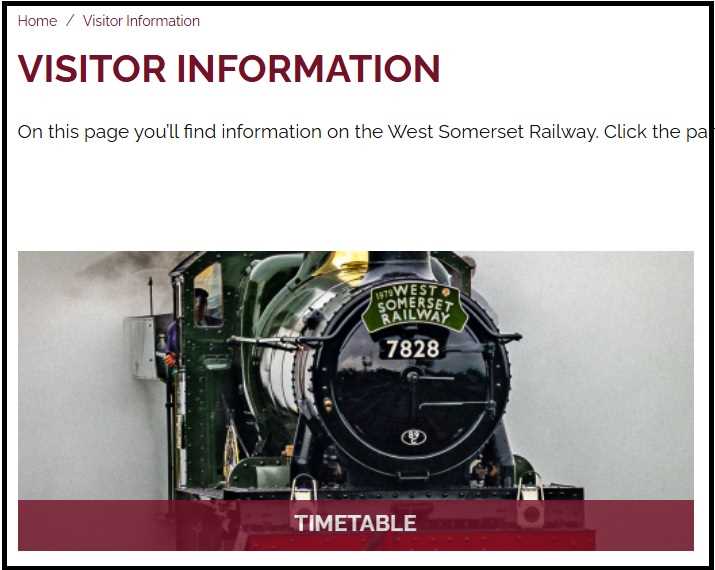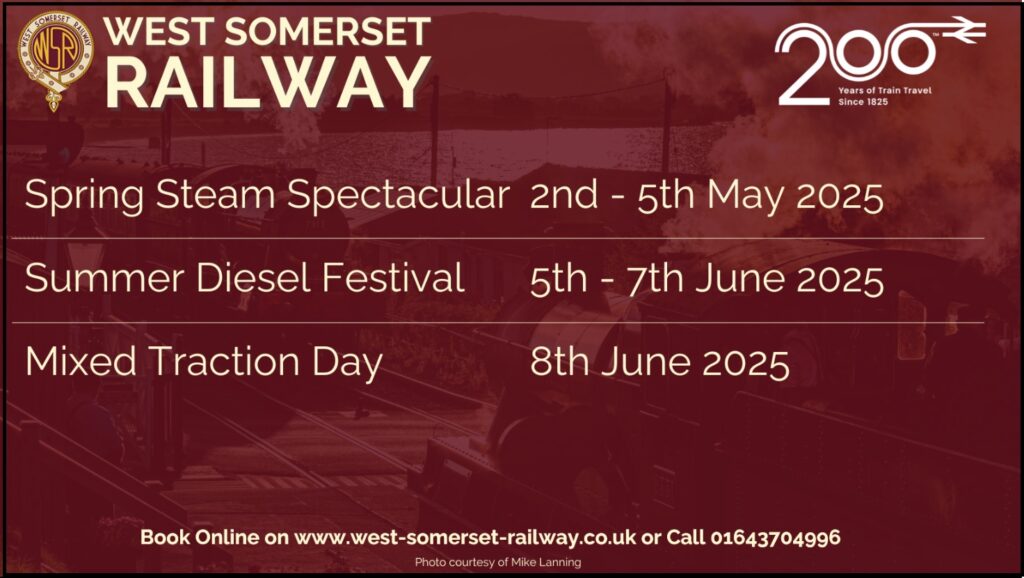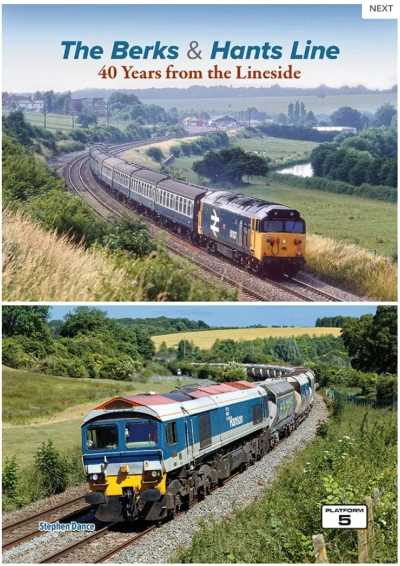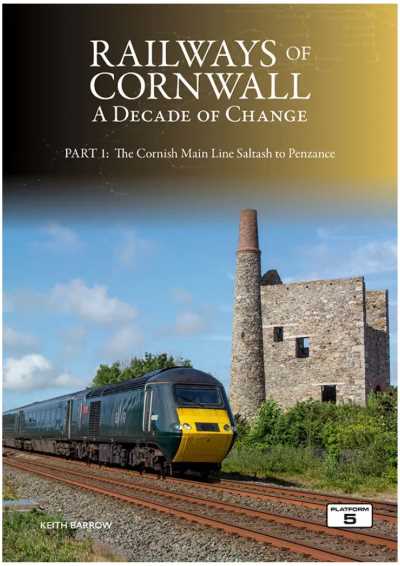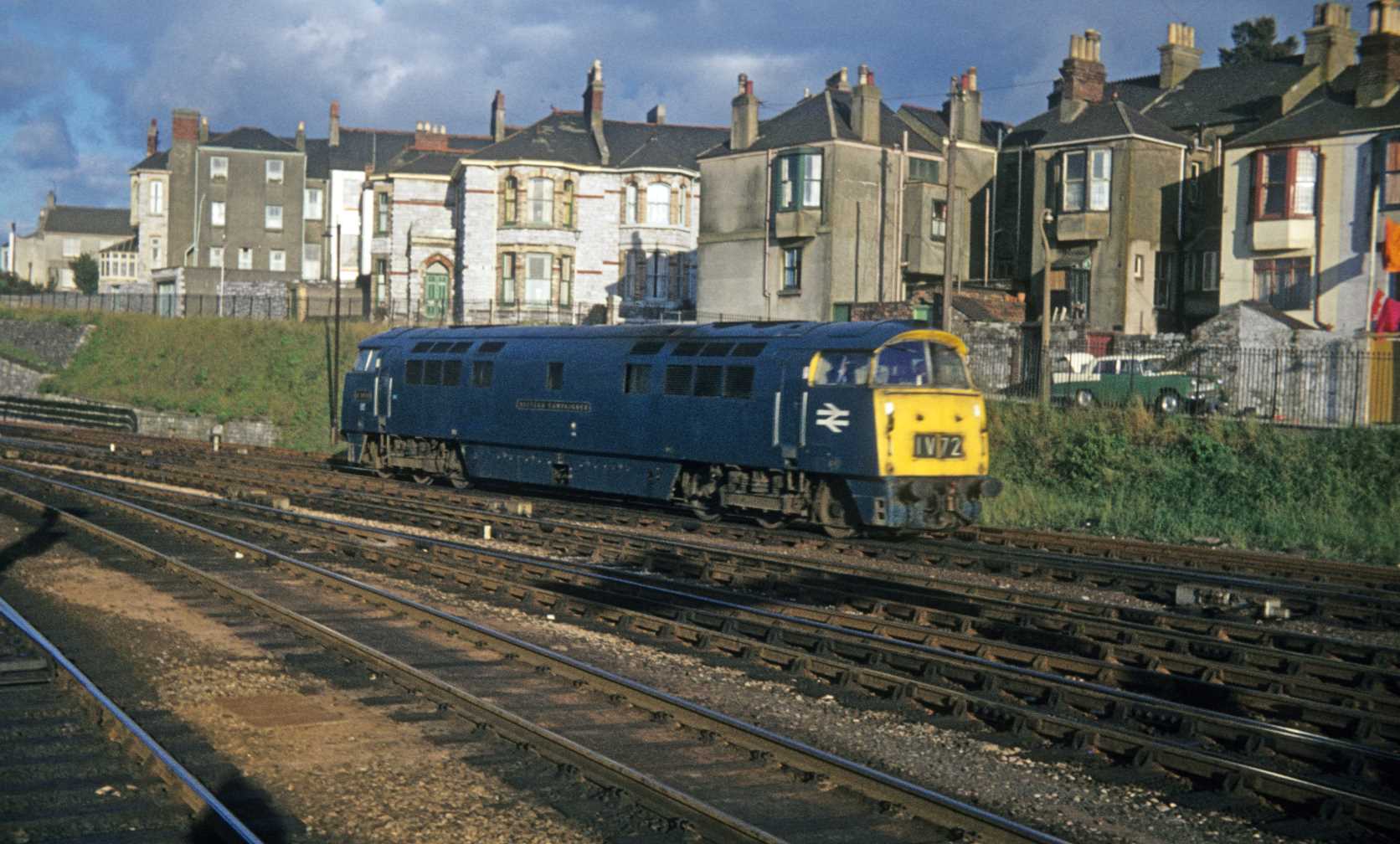Weekly Roundup – 16-Feb-25
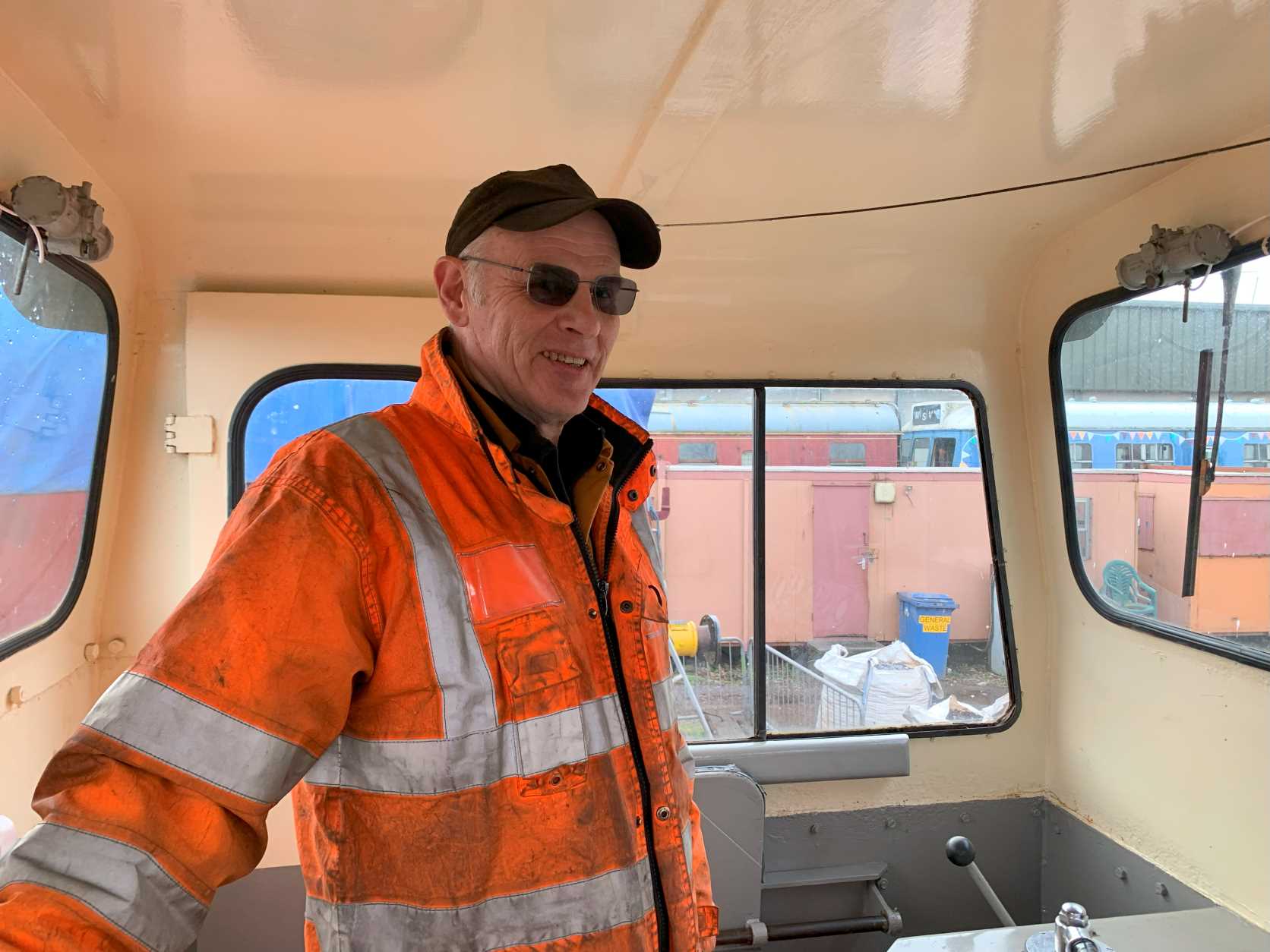
DEPG Chairman Martin Howard is happy with the progress being made on D1010, D4107, D7017, D7018 and D9518 and is also happy that Barclay 578 (ROF 1) is running again ! Pictured at Williton on Saturday 15th February 2025 by Andy Royal © CC BY-NC 3.0
The lifting activities that took place at Williton on Friday and Saturday 7th/8th February were almost disrupted by the failure of the starter motor on DEPG yard pilot Barclay 578 (ROF1) which prevented Class 14 ‘Teddy Bear’ D9518 (NCB No. 7) from being pulled out of the loco shed. In the end, the skill of the crane operator from Heaver Brothers saved the day by lifting the cab back on to the Class 14’s frames inside the shed, avoiding a delay and the expense of another crane visit.
The issue has now been resolved by repairs to the starter motor that were carried out by DEPG volunteer John Cooke on Saturday 15th, with the repaired motor re-fitted to the loco by Martin later in the day. The loco started straight away and was later shunted to a more convenient location on number 2 road where it is now ready for future duties – hopefully with improved reliability and resilience since we have now acquired some spare parts !
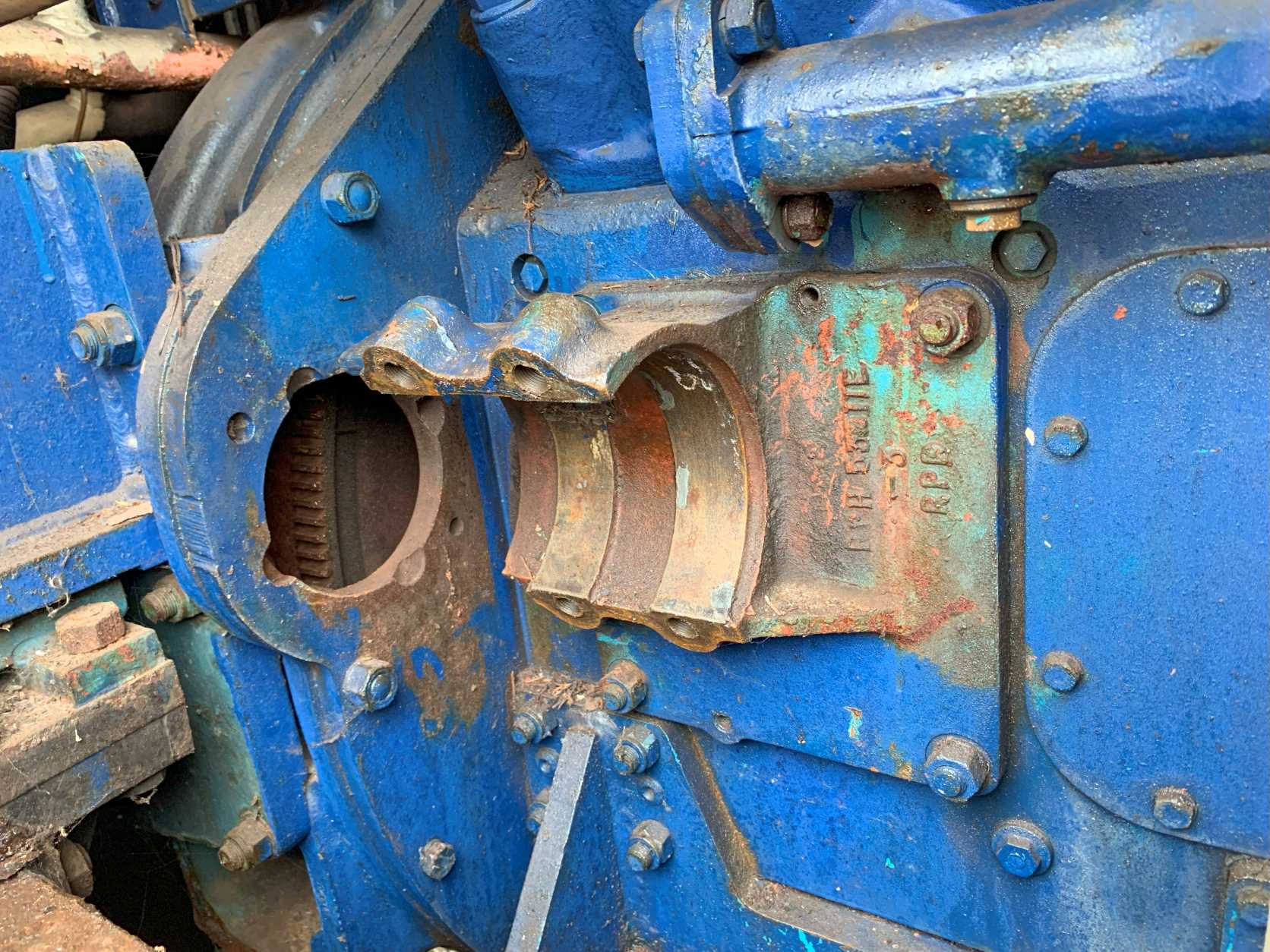
Barclay 578 (ROF 1) – starter motor removed. Pictured at Williton on Saturday 15th February 2025 by Andy Royal © CC BY-NC 3.0
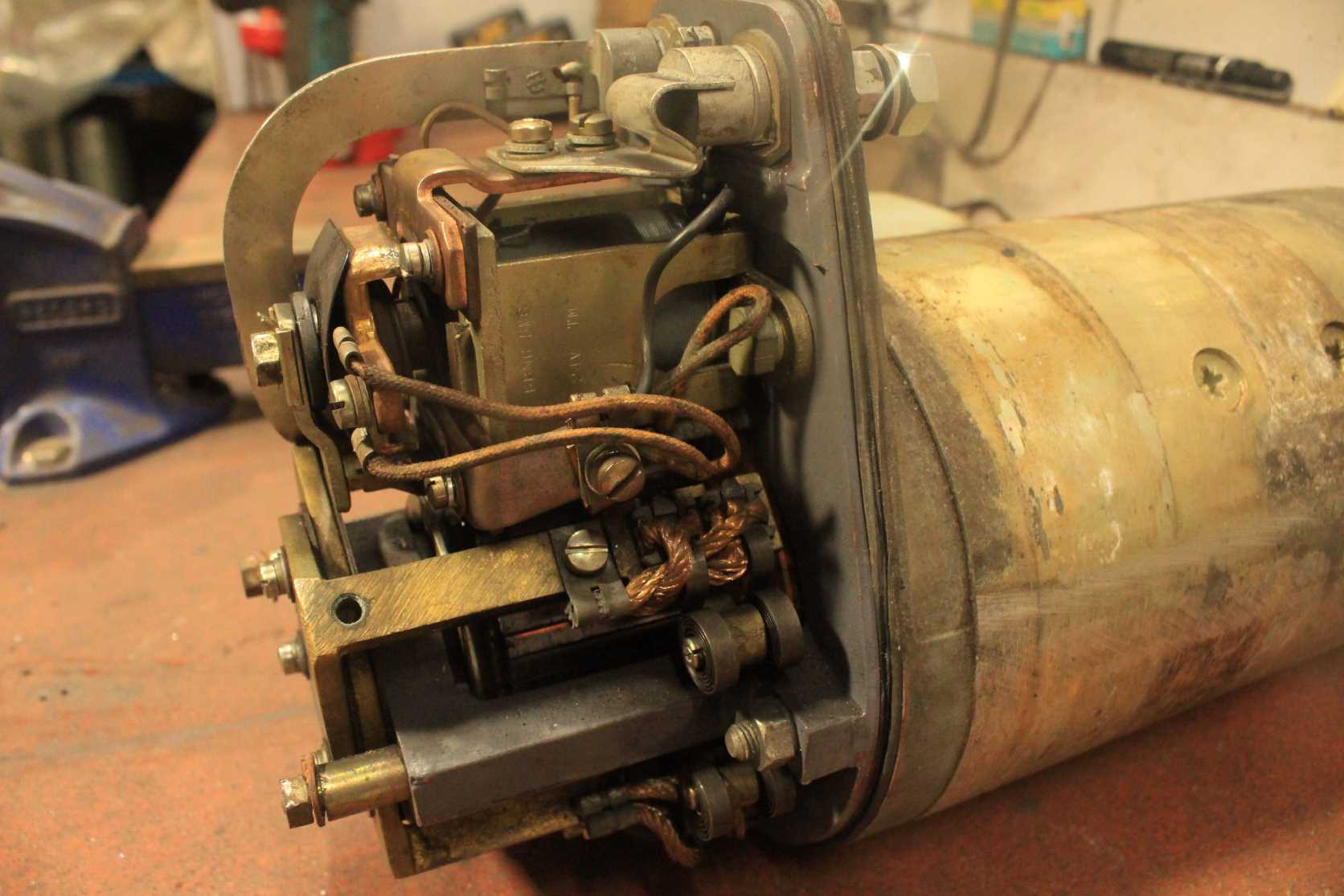
Barclay 578 (ROF 1) – starter motor solenoid switch contacts in need of repair. Pictured at Williton on Saturday 8th February 2025 by Terry Deacon © CC BY-NC 3.0
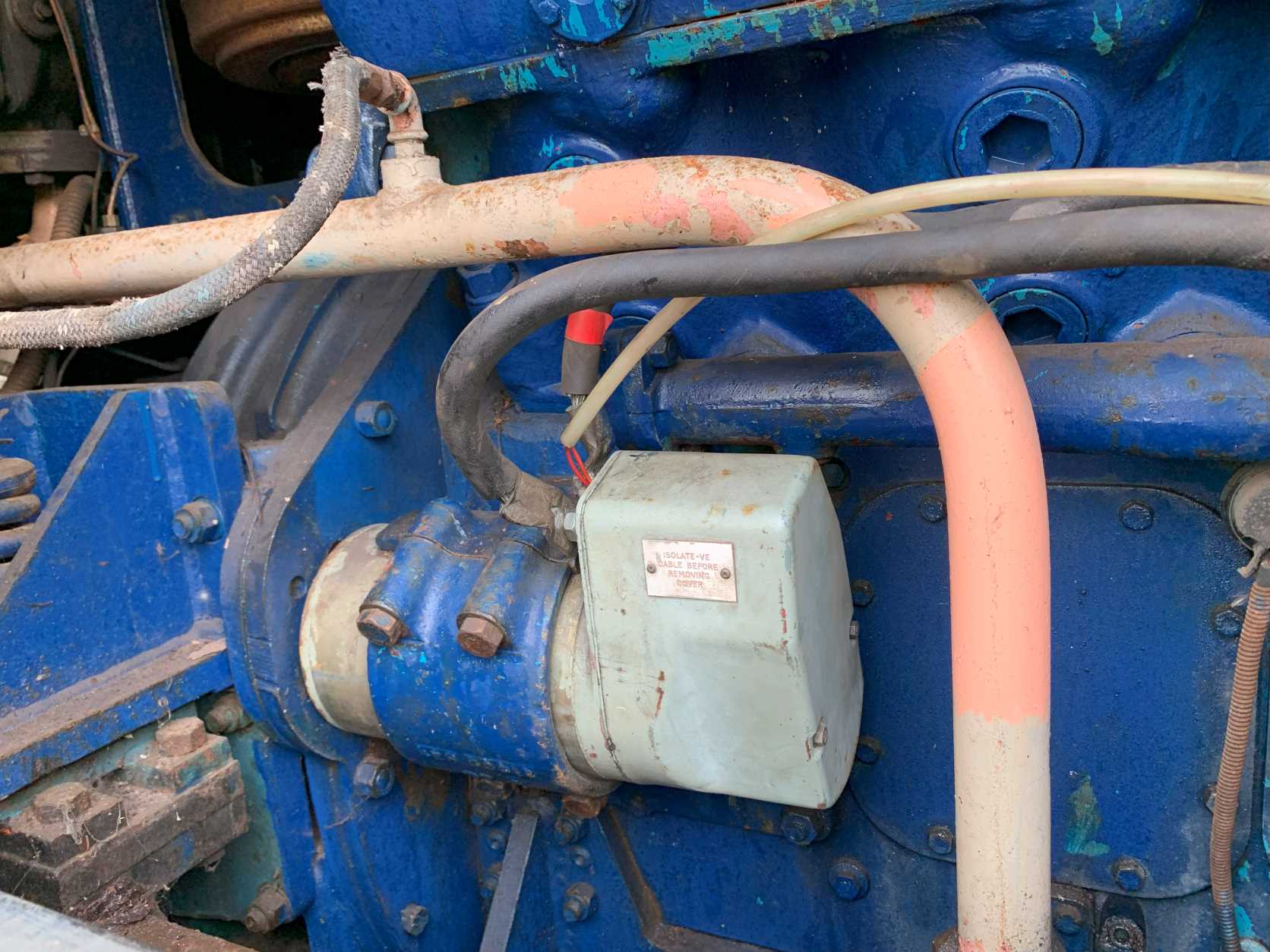
Barclay 578 (ROF 1) – repaired starter motor re-fitted. Pictured at Williton on Saturday 15th February 2025 by Andy Royal © CC BY-NC 3.0
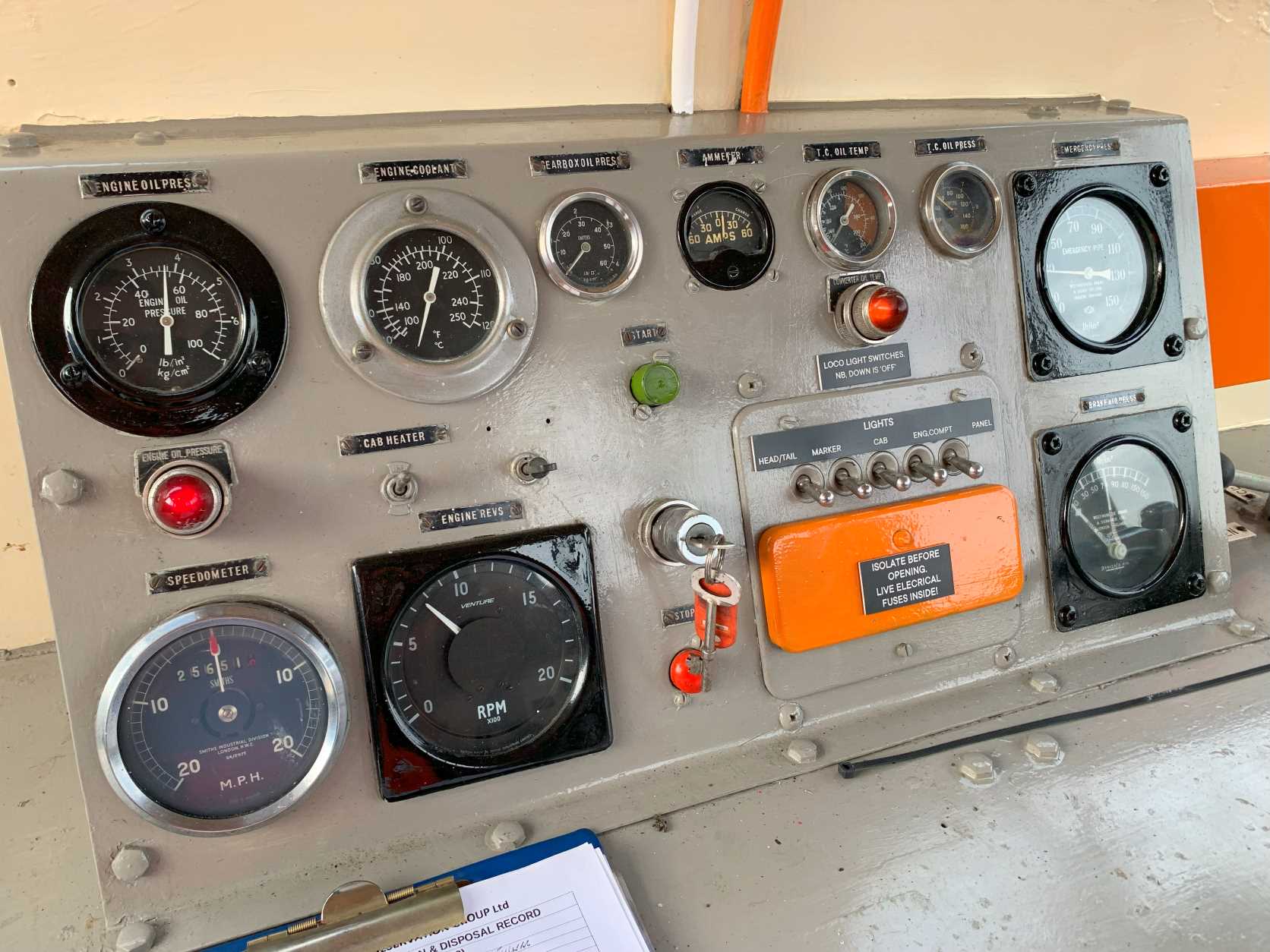
Barclay 578 (ROF 1) – engine started and running at a steady 750 rpm to warm up. Pictured at Williton on Saturday 15th February 2025 by Andy Royal © CC BY-NC 3.0
D7017 UPDATE
The WSR engineering team are doing a fine job on D7017 at Minehead, with the old corroded metal being cut out and replaced with new metal, in some cases with specially-formed curvature to match the original profiles. The photos below (all provided by Neil McCannon © CC BY-NC 3.0) showcase the work that is being done by the combined team of staff and volunteers, all of which is very much appreciated:
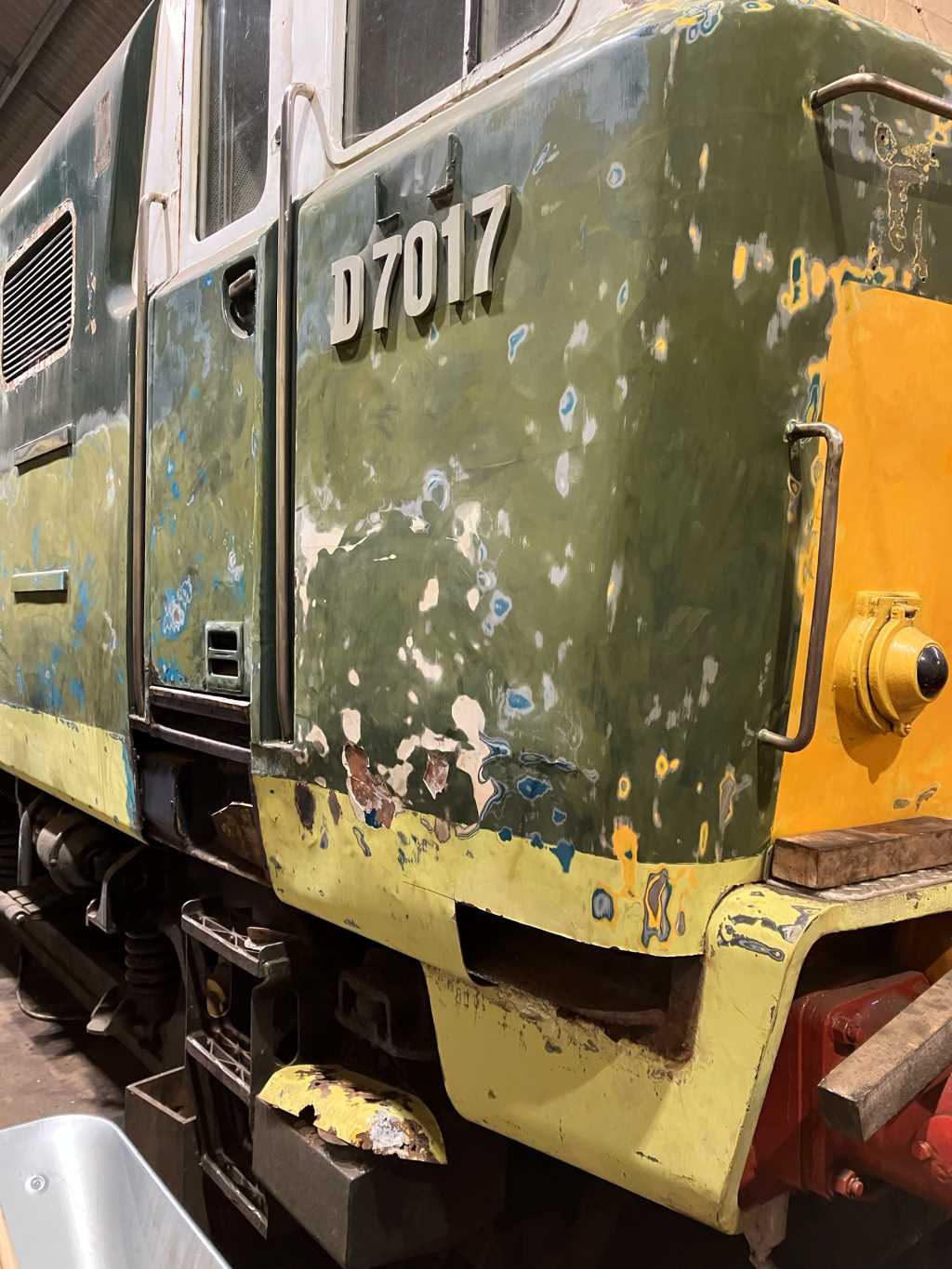 |
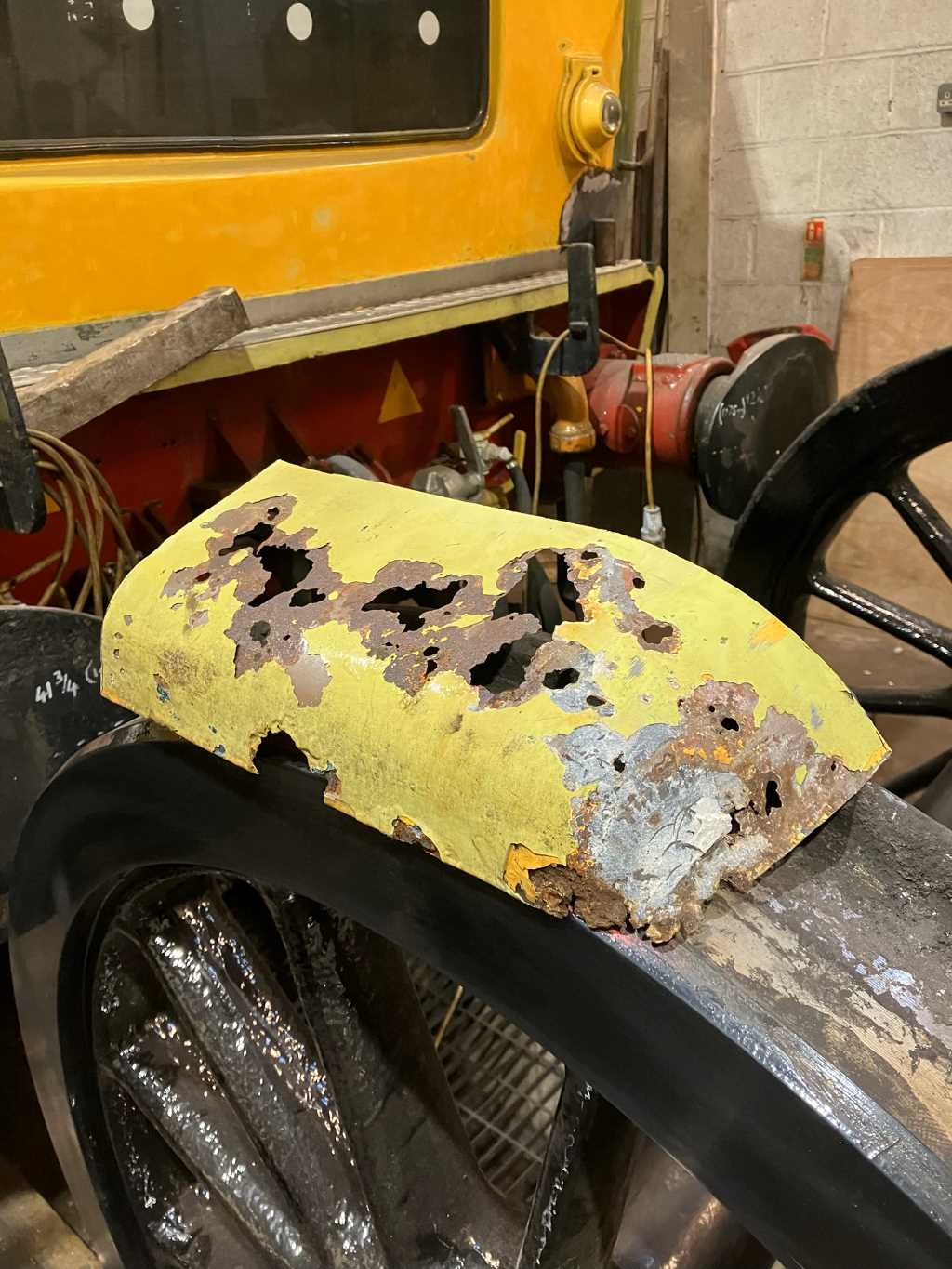 |
| Above – 11-Feb-25 – The lower part of the valance on the secondman’s side at the the ‘A’ end has been cut out … | … and this photo shows the reason why. |
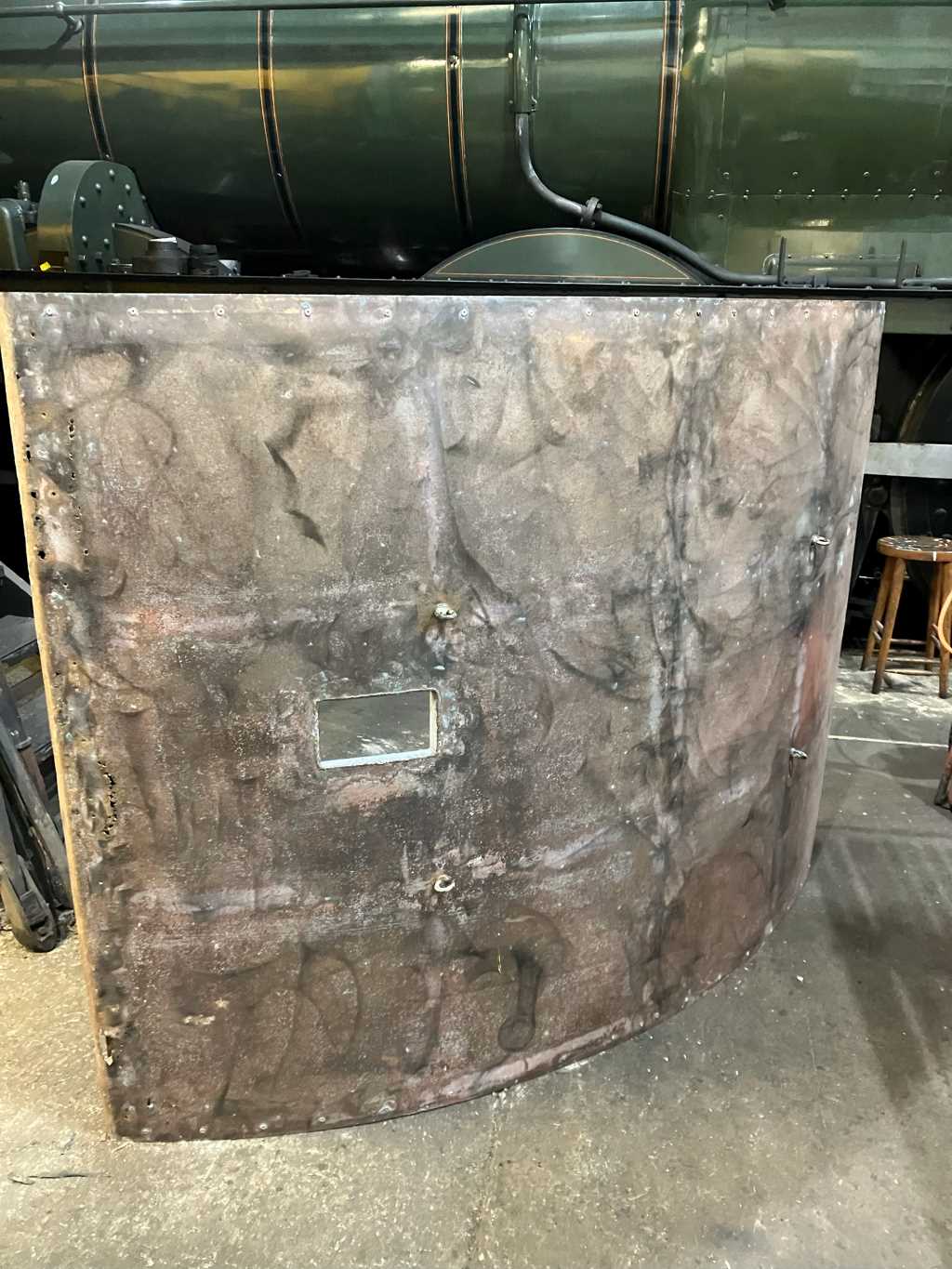 |
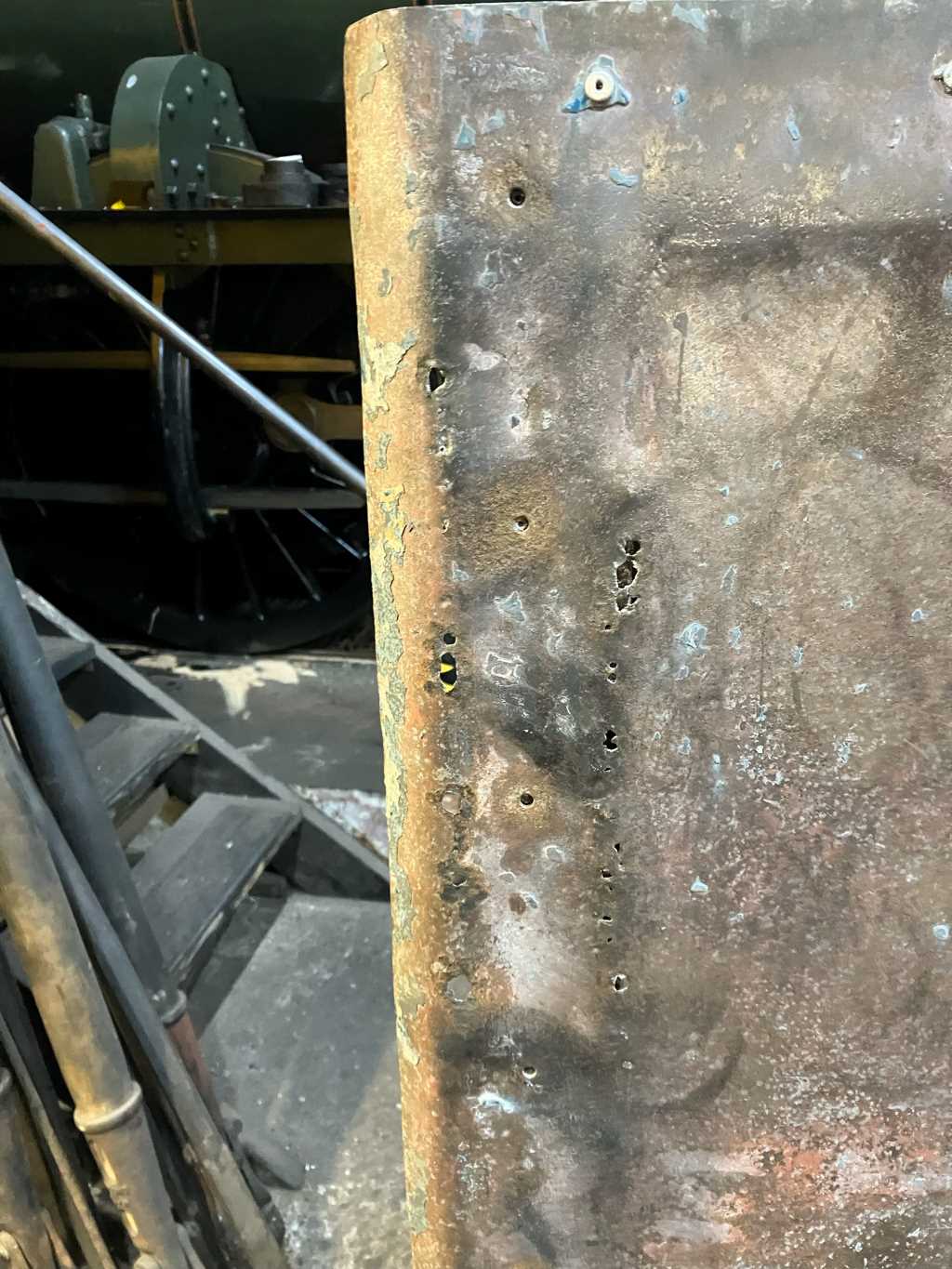 |
| Above – 11-Feb-25 – The roof section that goes over the preheater has been needle-gunned … | … which revealed some perforations ! |
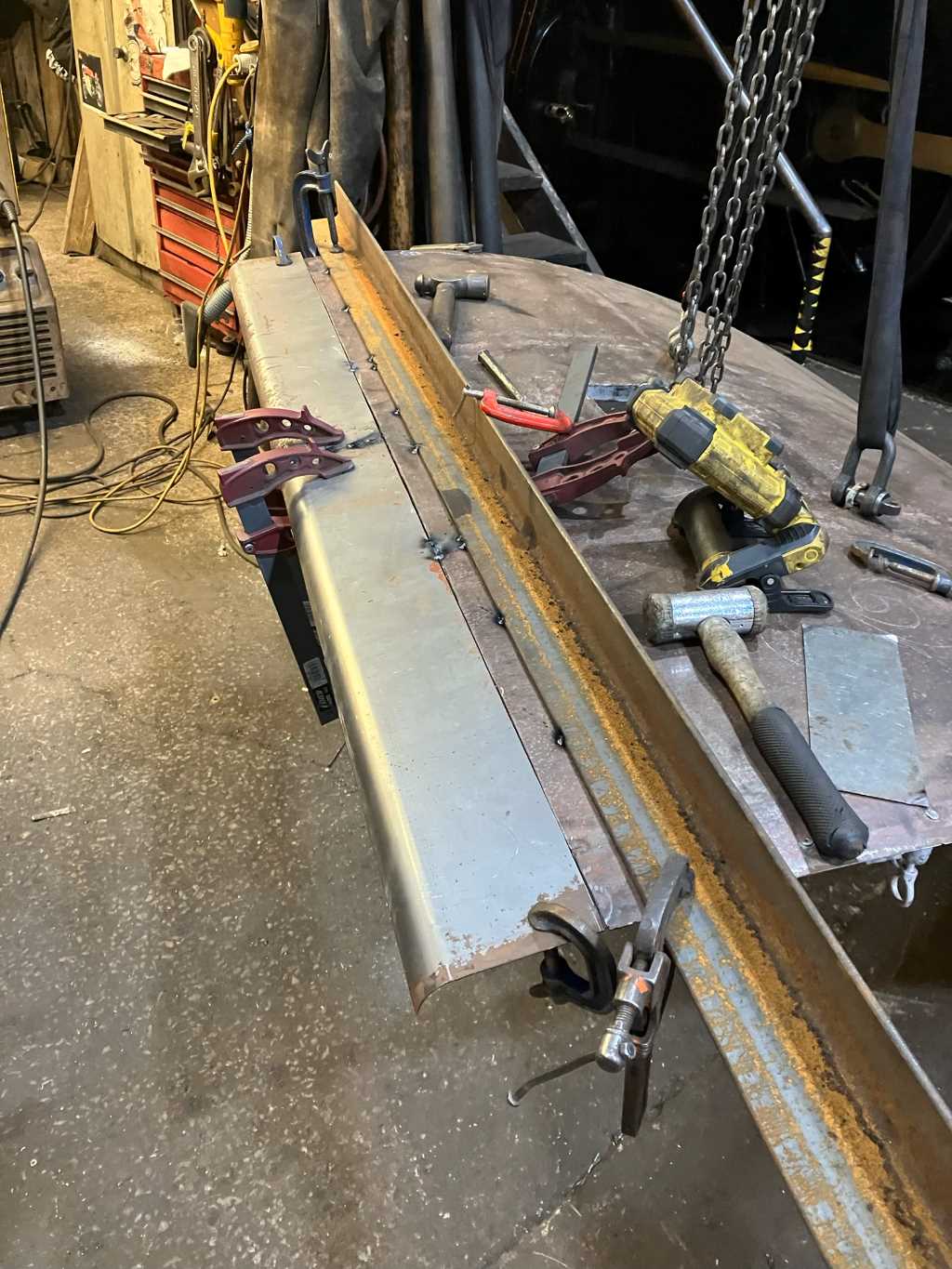 |
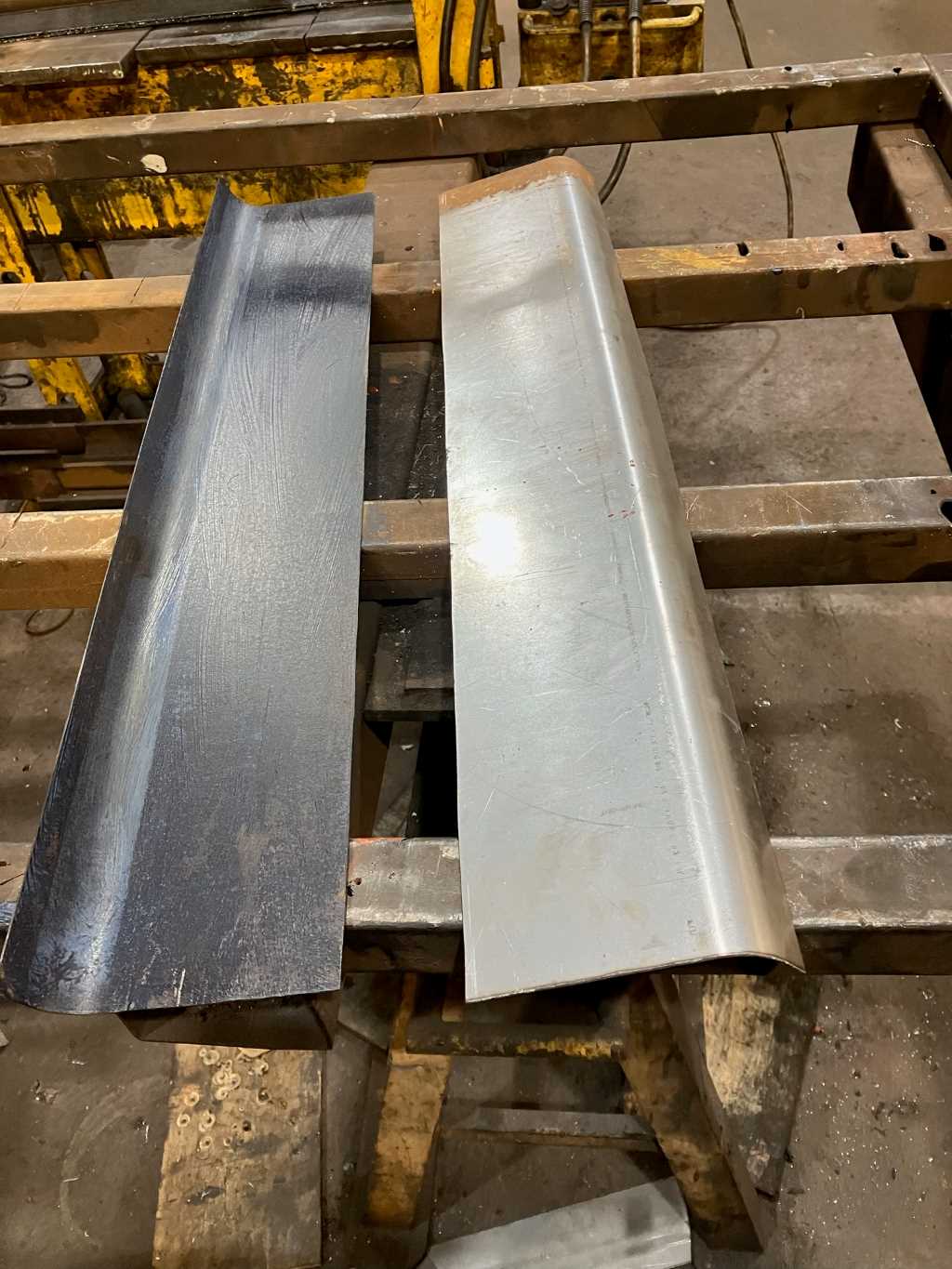 |
| Above – 14-Feb-25 – new steel sheet being formed to match the curvature of the original … | … and ready to be welded into position. |
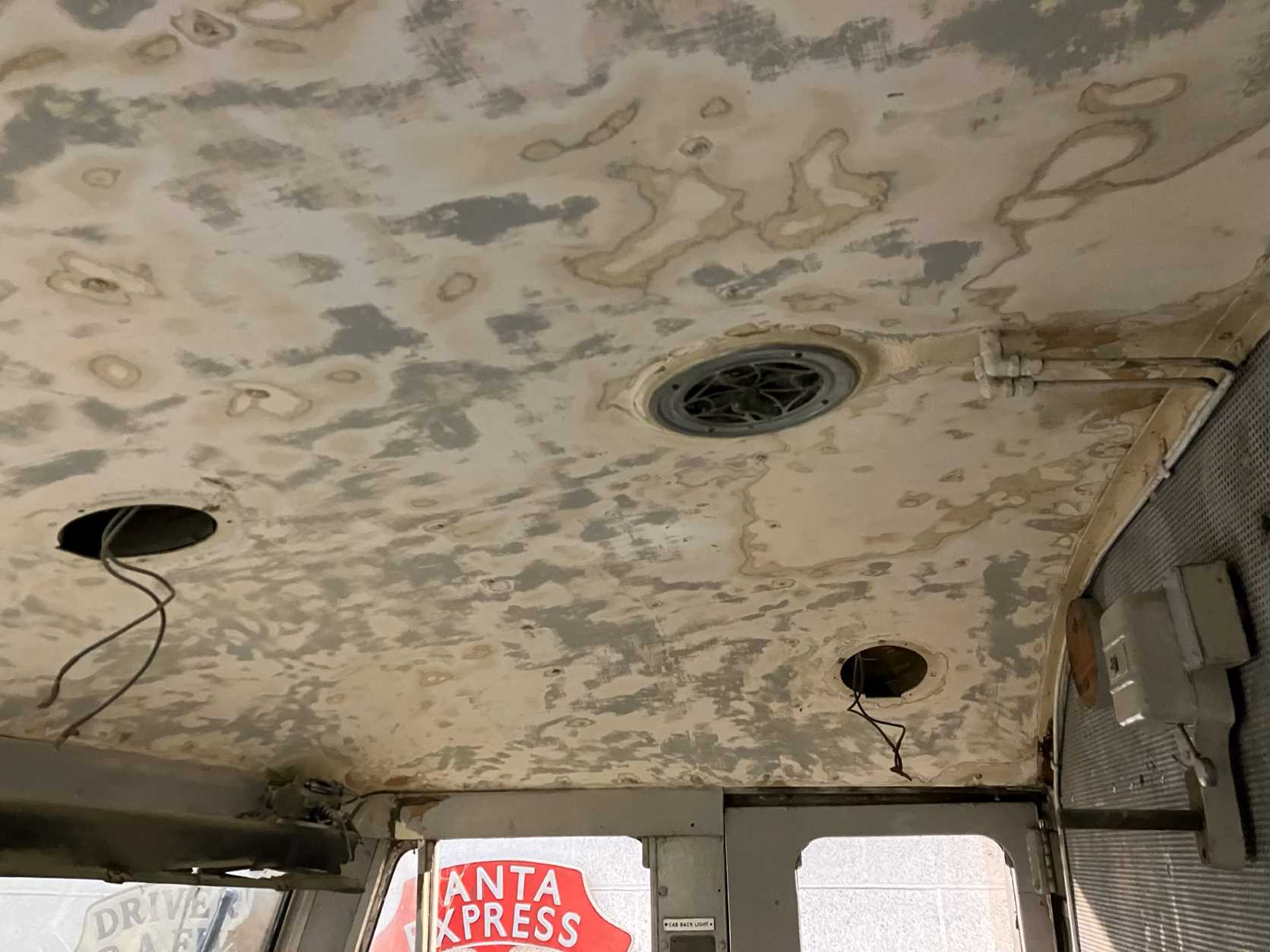 |
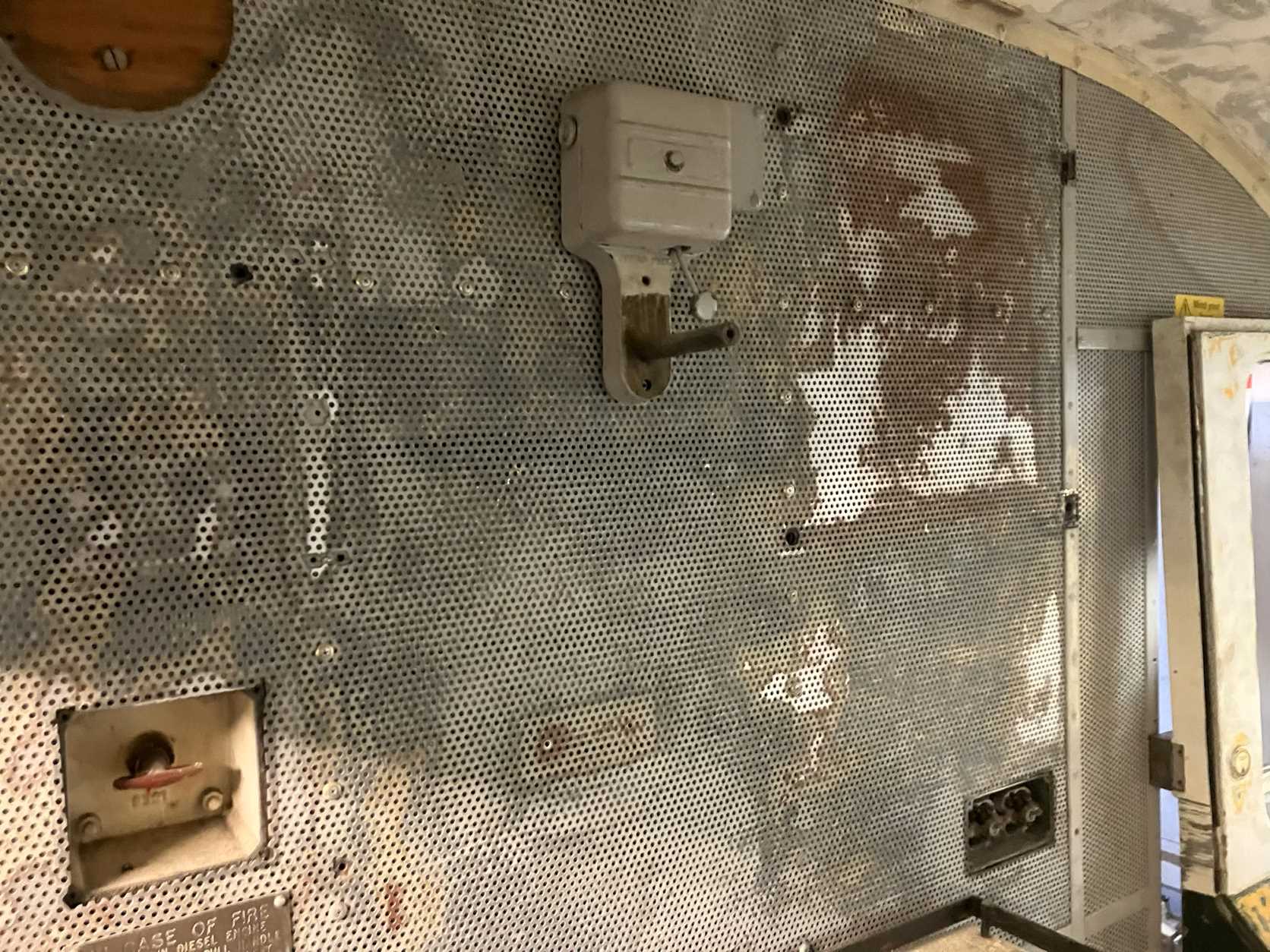 |
| Above – 11-Feb-25 – the cab interior roof has been sanded back and is ready for painting … | … and the bulkhead is being readied for painting. |
We continue to receive donations to the D7017 bodywork overhaul fund, so a BIG THANK YOU goes out to the 67 people who have donated to this project so far, keeping it moving forward to ensure that the loco will be back in service in time for the WSR’s Summer Diesel Festival (5-7th June).
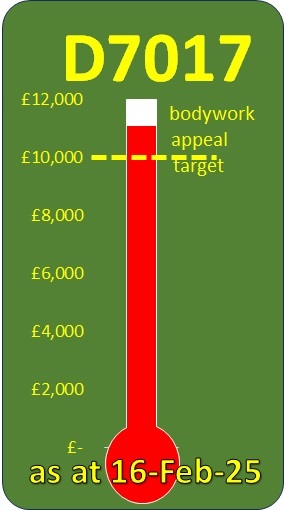 The fundraiser for the bodywork repairs for ‘Hymek’ D7017 has been kept open with a new target of £12,000 with a total of £11,095 being raised so far.
The fundraiser for the bodywork repairs for ‘Hymek’ D7017 has been kept open with a new target of £12,000 with a total of £11,095 being raised so far.
THANK YOU FOR YOUR FANTASTIC SUPPORT !
The new target will cover most of the work being done on the loco, the remaining £3,000 being provided from the DEPG’s general fund. The sub-contract route was taken to make sure that the loco gets repaired during the winter and is able to take pole position in the celebration of 50 years of ‘Hymek’ preservation that will take place on 30th and 31st of August this year.
The fund will remain open until the work is completed, to make sure that we have sufficient funding to cover any unexpected costs, and make sure that a thorough and long-lasting repair is carried out. All funds donated via this appeal will be allocated to returning D7017 to service in time for the forthcoming season.
 Can you help ? Click here to donate £17 to D7017 !
Can you help ? Click here to donate £17 to D7017 !
If you can help with this short-term appeal, please make a donation via our website (click on the icons above or below) or by bank app or by sending a cheque to the DEPG at Williton. THANK YOU VERY MUCH !
WSR NEWS
The refresher training continues with three more days of hand-on training taking place this week involving duty loco Class 33 D6575 (33048) operating between Bishops Lydeard and Norton Fitzwarren. This does deplete the available hours for volunteering at Williton, but it is essential to ensure safe and efficient operation of the railway, so it takes first priority.
The WSR have published their running calendar for 2025 on their website and social media channels, and we have updated our DIESEL RUNNING DATES page including provisional loco allocations, some of which are subject to change to align with the availability of the locos and the crews. As the information becomes more refined, we will update our page and send out a DIESELGEN bulletin with the clarification. Click here or on the banner below to view the provisional allocations:
Click here or on the image below to visit the WSR’s timetable page:
The WSR’s SUMMER DIESEL FESTIVAL has been confirmed as being Thursday 5th through Saturday 7th with a Mixed Traction Day on Sunday 8th of June 2025.
Click here to go to our DIESEL RUNNING DATES page
Click here to go to our ONLINE SHOP
Thank you very much for your support !
LOCO NEWS:
Class 52 D1010 ‘WESTERN CAMPAIGNER’ – the task of listing and evaluating the many component parts of the ‘B’ bogie is ongoing, the objective being to produce a ‘shopping list’ of parts that we can place on order while we turn our attention to the ‘A’ bogie (which is also likely to need the same or similar, so we will order two sets). The ‘A’ cooler group received attention from Tony, with one of several corroded areas being cut out and prepared for new metal to be welded in (photos taken at Williton on Saturday 15th February 2025 and provided by Leroy Ford © CC BY-NC 3.0). Progress on other parts of the loco has slowed while volunteers are undergoing training, but we do have several new volunteers who are now familiar with the work required and will be back on the case very soon.
 |
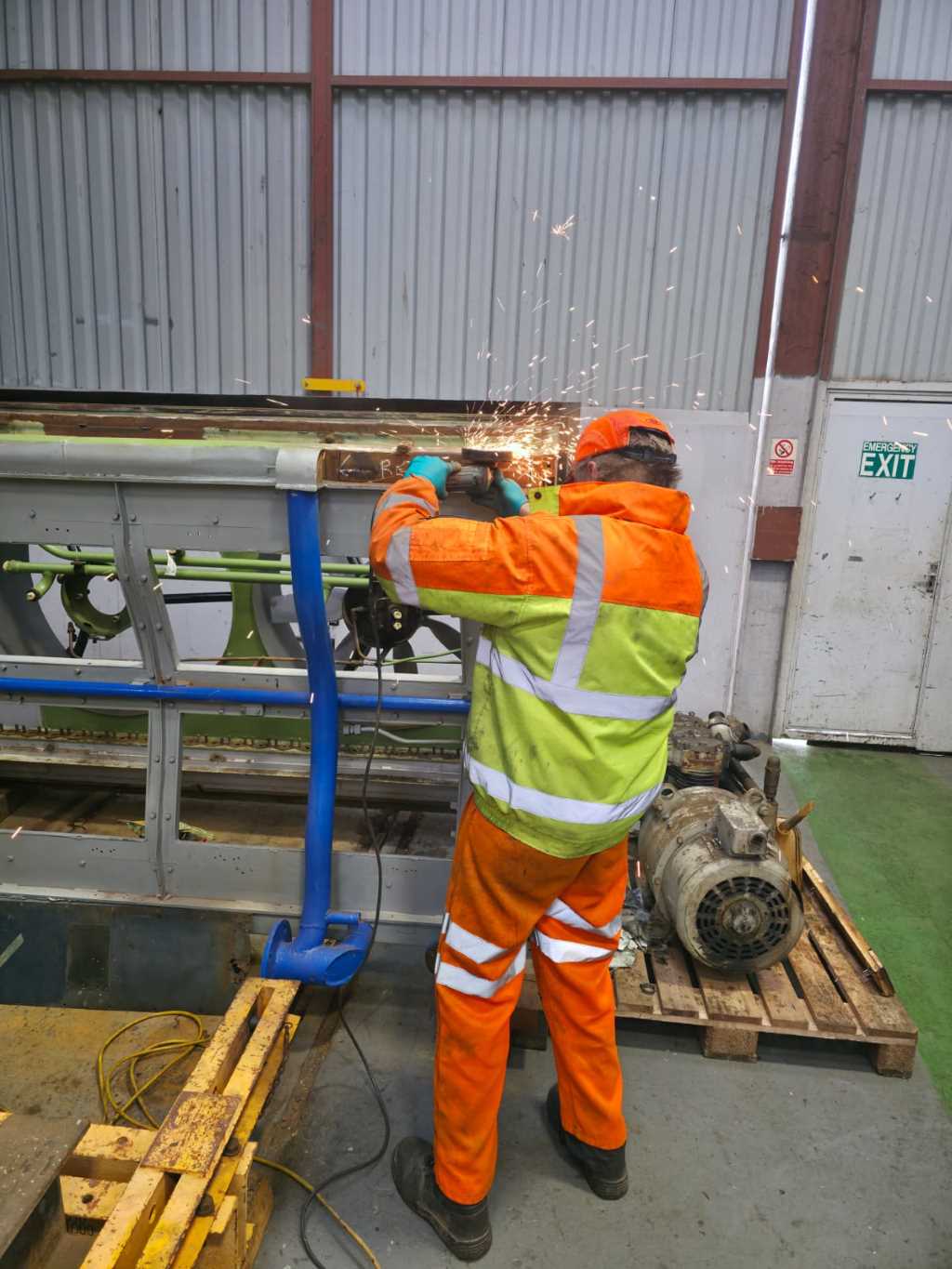 |
| Step 1 – identify the area requiring repair … | Step 2 – cut into the area requiring repair … |
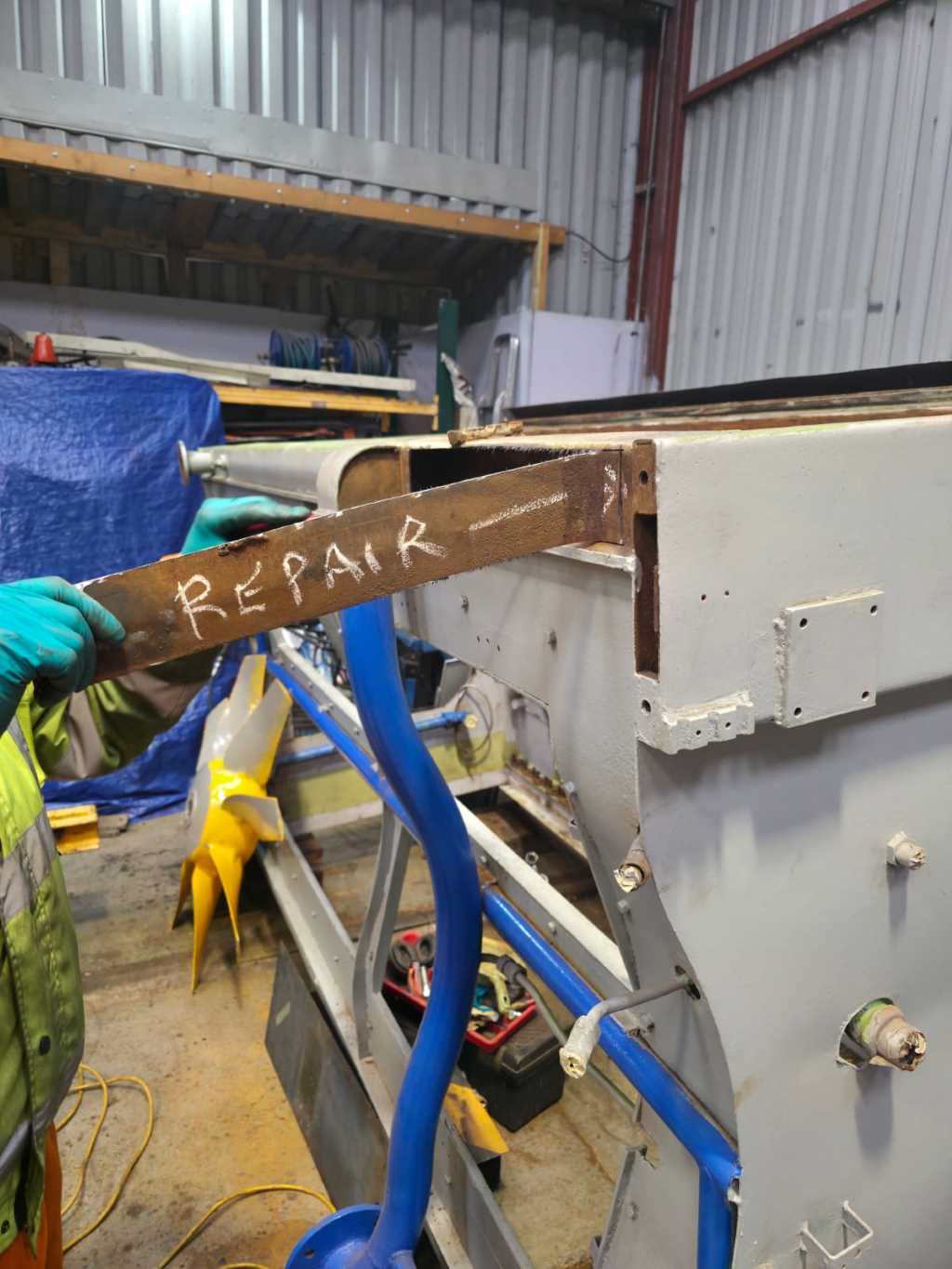 |
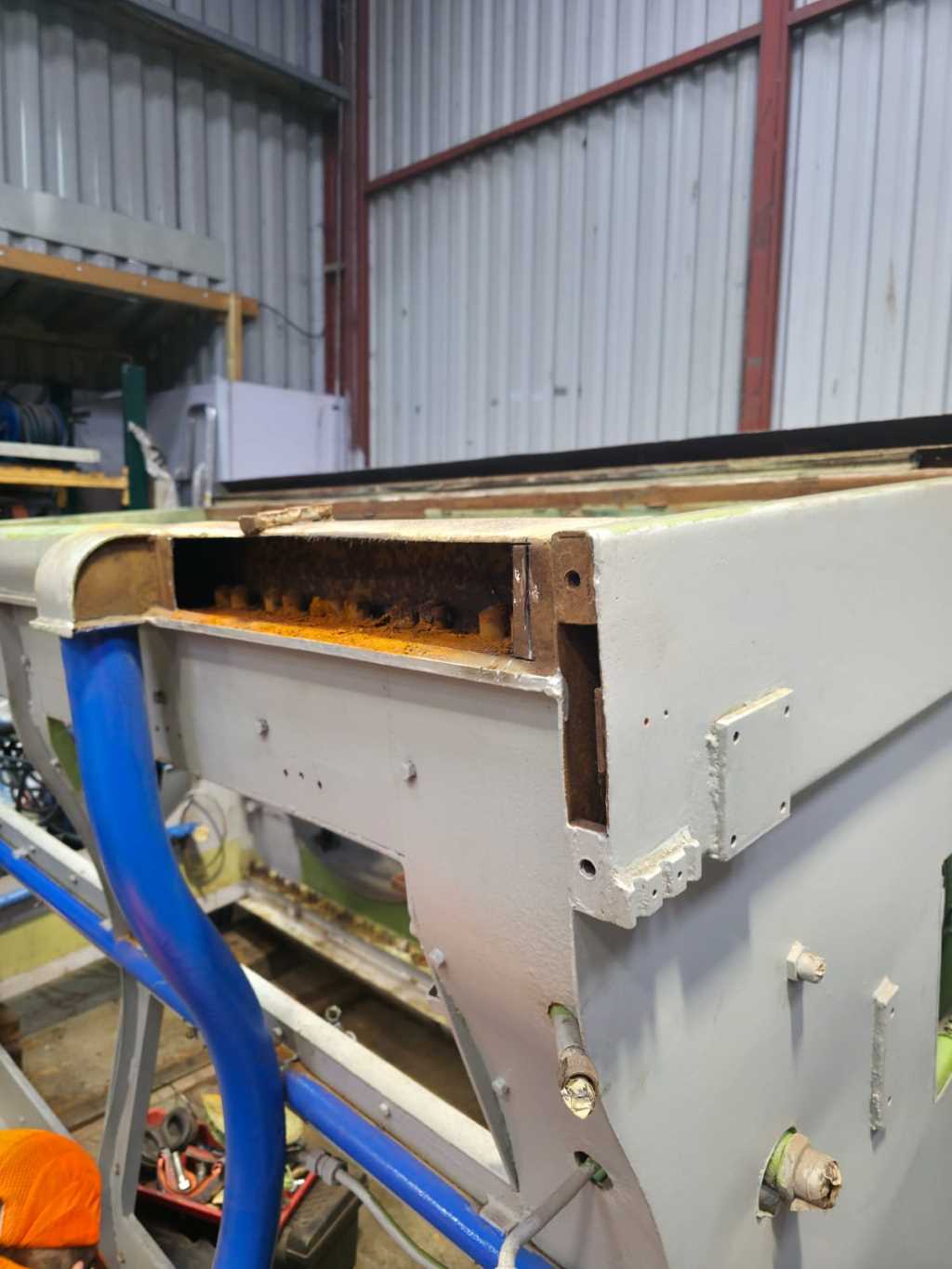 |
| Step 3 – remove the corroded steel … | Step 4 – in progress – prepare the area for the new metal. |
Our appeals for MORE VOLUNTEERS are working but WE STILL NEED MORE HELP to get this huge loco back on the rails, so please get in touch by using our CONTACT FORM if you are able to join the team.
As mentioned before, apologies to those D1010 sponsors who have yet to receive the photos and certificates for the patches that they have sponsored. The bitterly cold and/or wet weather is preventing us from spending outdoor time on the engraving, so we will need to leave this work a little longer, at least until the temperature is back in (positive) double digits.
Rest assured that every sponsor will receive their certificate and the details of where to find their sponsored patch. We will be making a further push for funds soon, because we have some big ticket items for refurbishment, including the remaining cardan shafts and 32 springs from the suspension system.
MANY THANKS to all who have sponsored and supported the RESTORATION of D1010 !
Class 09 D4107 (09019) – contrary to what was reported last week, only ONE of the two Oleo hydraulic buffers have been overhauled by the specialist subcontractor, because the other was corroded and beyond repair. This gives us a problem because Oleo buffers for Class 08/09 are rare indeed. We might have to fit sprung buffers, the same as at the cab end of the loco and the same as when the loco first entered service in 1961.
Strange question, but worth asking, do you happen to have a spare Oleo buffer for a Class 08/09 ? If yes, please use our CONTACT FORM to get in touch with us.
Otherwise, the loco is making good progress towards her return to service, which is expected to be in early March, buffers permitting !
Class 33 D6566 (33 048) – this loco will undergo some planned maintenance while resident at Williton.
Class 33 D6575 (33 057) – this loco is the Duty Loco and is based at Bishops Lydeard, which is handy because she will be in use again on 21/22/23 February between Bishops Lydeard and Norton Fitzwarren for crew training purposes.
Class 35 ‘Hymek’ D7017 – in addition to the bodywork overhaul that is taking place in the loco shed at Minehead, volunteer driver and loco manager Neil has sorted out the issue with the driver’s droplight (side) window after finding that corrosion had caused one of the channels to swell and jam the glass. The former BR(WR) Automatic Train Control (ATC) equipment had to be removed from the cab side wall to expose the window mechanism, but repairs have now been completed and the ATC equipment put back in place, so this job can be deleted from the list. Thank you Neil for completing this task !
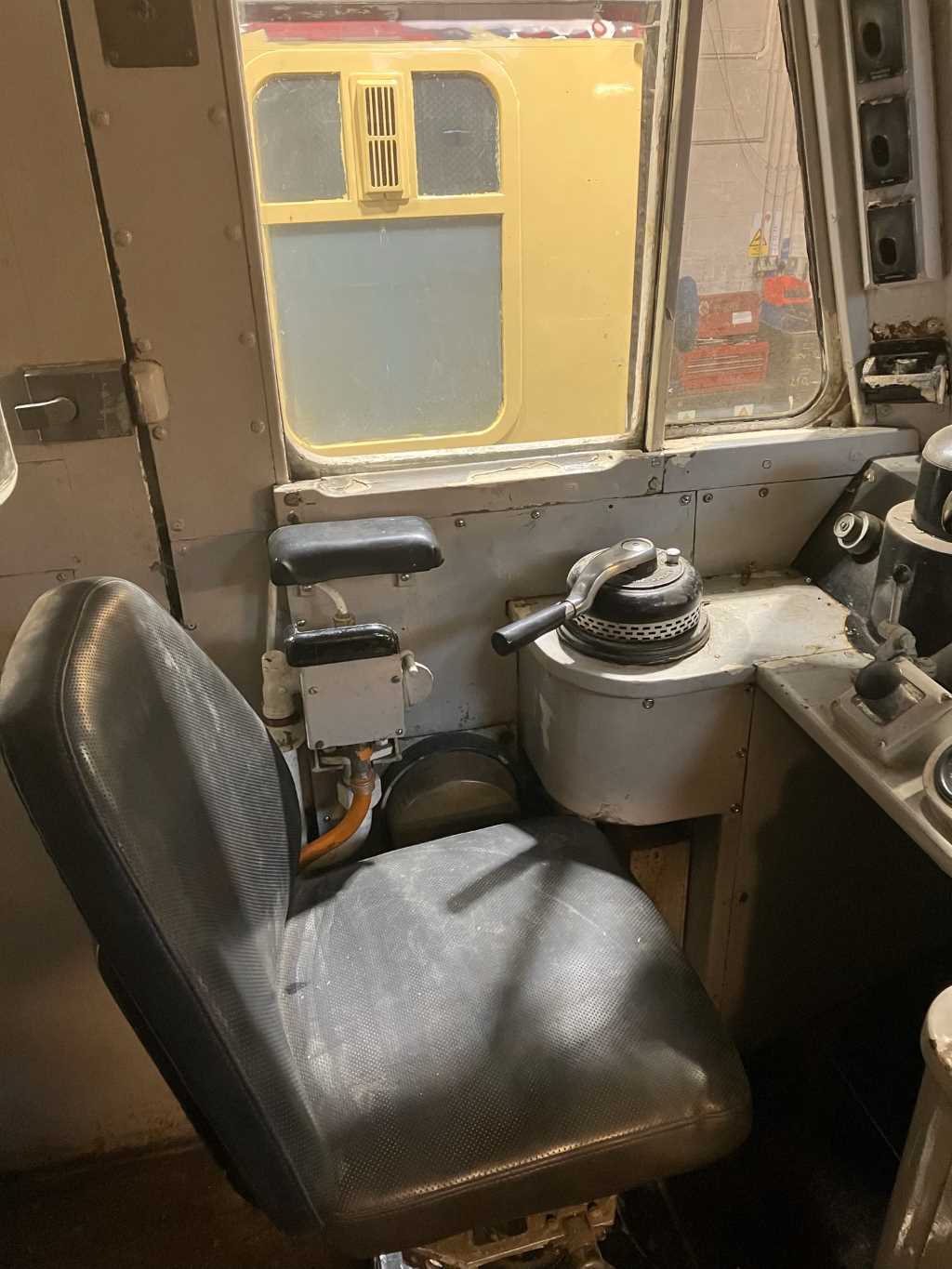
D7017 – the driver’s droplight window has received attention and is now working properly again. Pictured at Minehead on Saturday 15th February 2025 by Neil McCannon © CC BY-NC 3.0
Class 35 ‘Hymek’ D7018 – this loco is getting closer to her return to service in this, the 50th year of ‘Hymek’ preservation. This loco was the last of the Class to be switched off, being withdrawn from service at Old Oak Common on 16th March, 1975. For more details, get a copy of our booklet ‘HYMEK D7018’ by clicking on this link.
The transmission has now been put back in position inside the loco but there is still plenty of work to do before the engine can be started. The cardan shafts need to be attached (five in total), the cooling system needs to be connected and filled, the electrical connections need to be re-made and tested. Then, before starting the engine, a massive 290 litres (64 gallons) of oil needs to be pumped in to the transmission!
A test schedule is being drawn up and all of the necessary risk mitigations will be put in place prior to the big moment – the pressing of the START button in approximately two weeks from now. There will then be a period of static testing and assessment before any test running is contemplated. This is a step-by-step process and there are no short cuts.

D7018 – the repaired transmission needs to be coupled up to the five cardan shafts (engine, dynastarter, Serck pump, bogie A and bogie B) and needs to be re-connected to the cooling system and electrical system of the loco. Pictured at Williton on Tuesday 11th February 2025 by Colin Foxhall © CC BY-NC 3.0
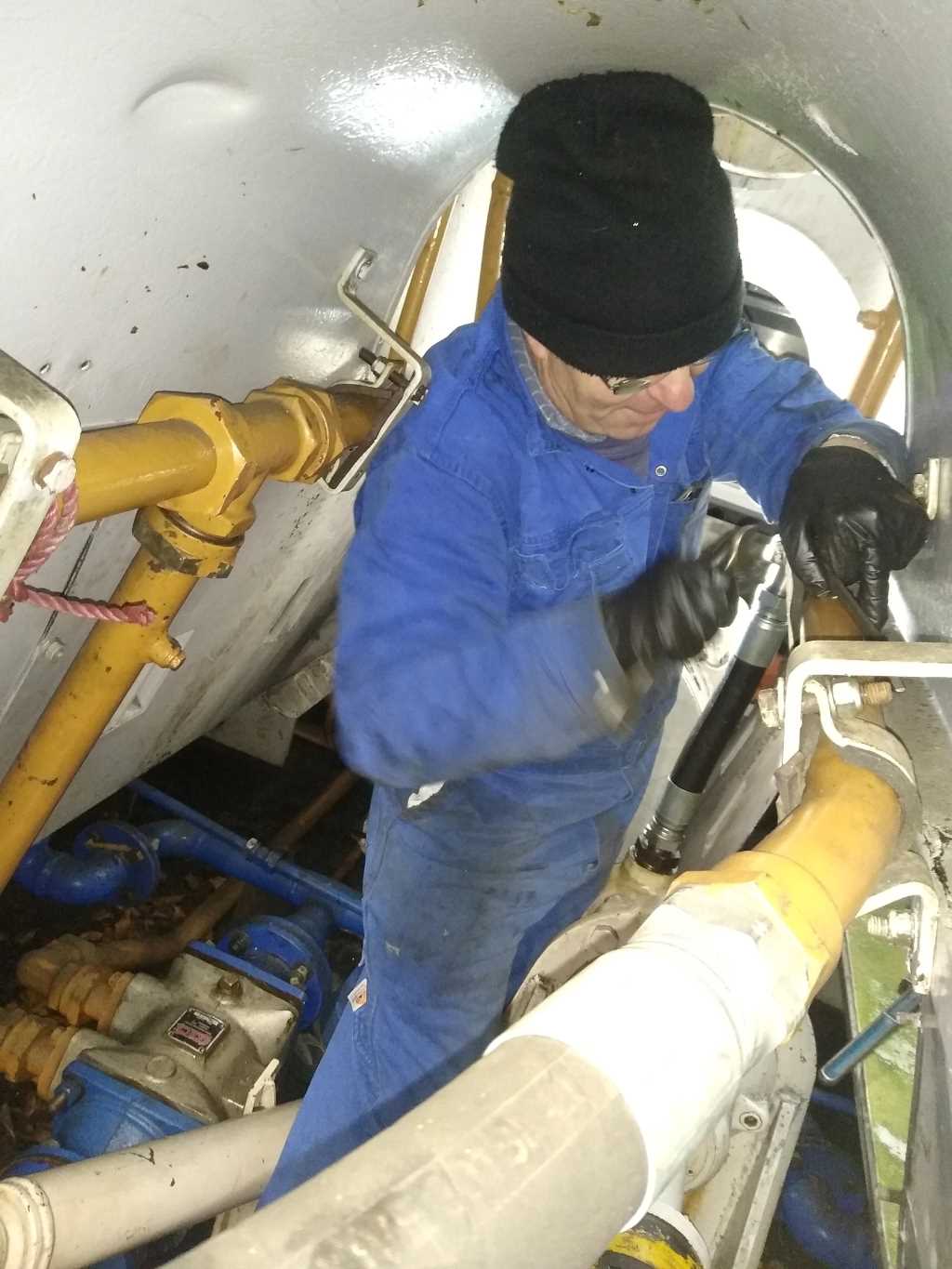
D7018 – transmission team volunteer Tim was at work in the ‘tunnel’ formed by the two banks of radiator elements of the cooler group. Pictured at Williton on Tuesday 11th February 2025 by Colin Foxhall © CC BY-NC 3.0
Class 14 ‘Teddy Bear’ D9518 – the cab assembly has now been remounted onto the loco frames and the work of bolting it down and re-attaching the various parts is in process. One side of the loco has been surrounded by the mobile work platforms so that the task of wiring up the cab to the rest of the loco systems can take place safely. The engine rebuild is proceeding rapidly – the crankshaft has been re-fitted, the photos below showing the value of the turnover rig that allows the engine block to be safely rotated and locked in position, to allow easy access.
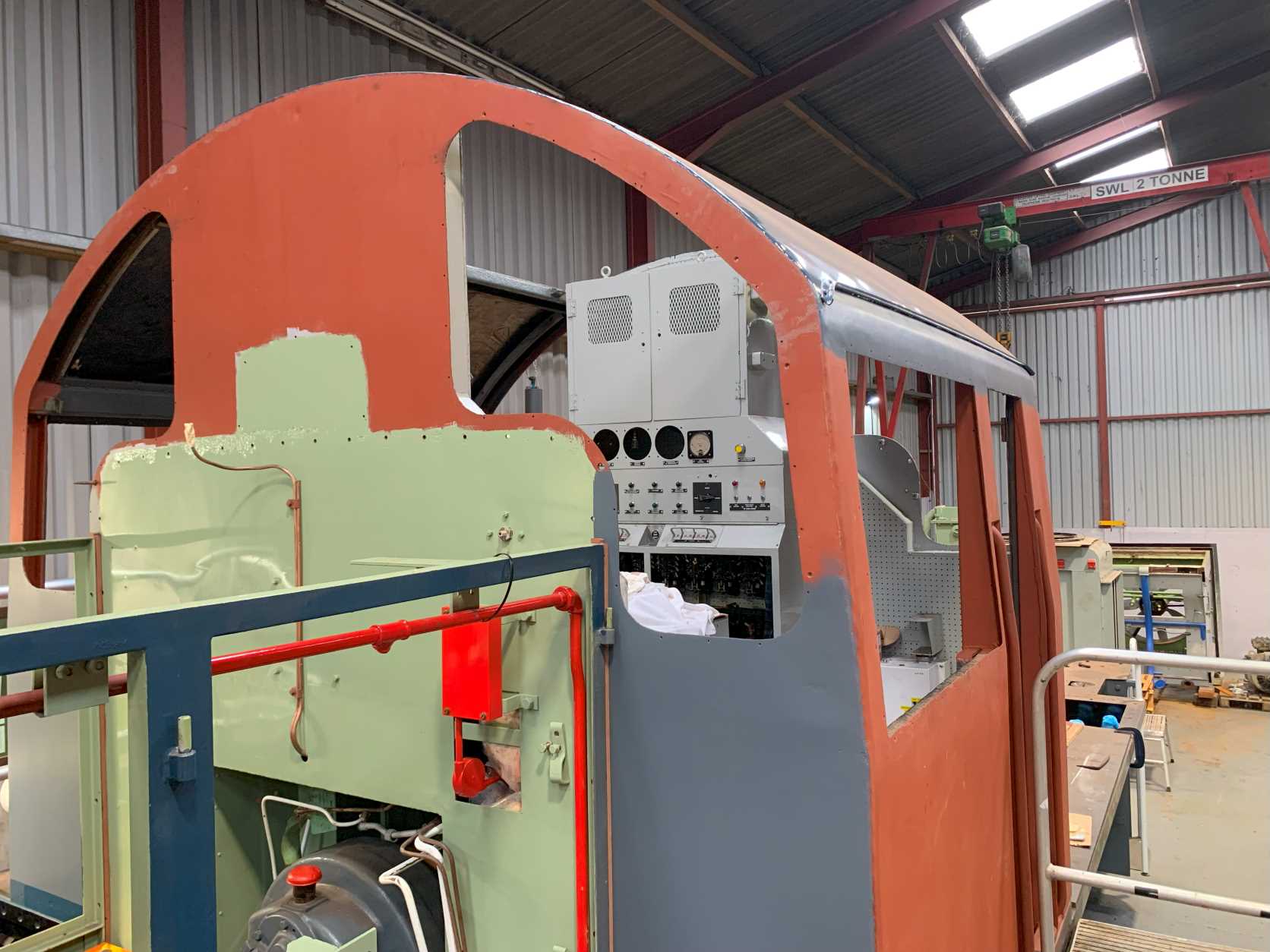
D9518 – the cab is now back on the loco, giving it a much more recognisable shape. Work on bolting the cab to the frames has already begun. Pictured at Williton on Saturday 15th February 2025 by Andy Royal © CC BY-NC 3.0
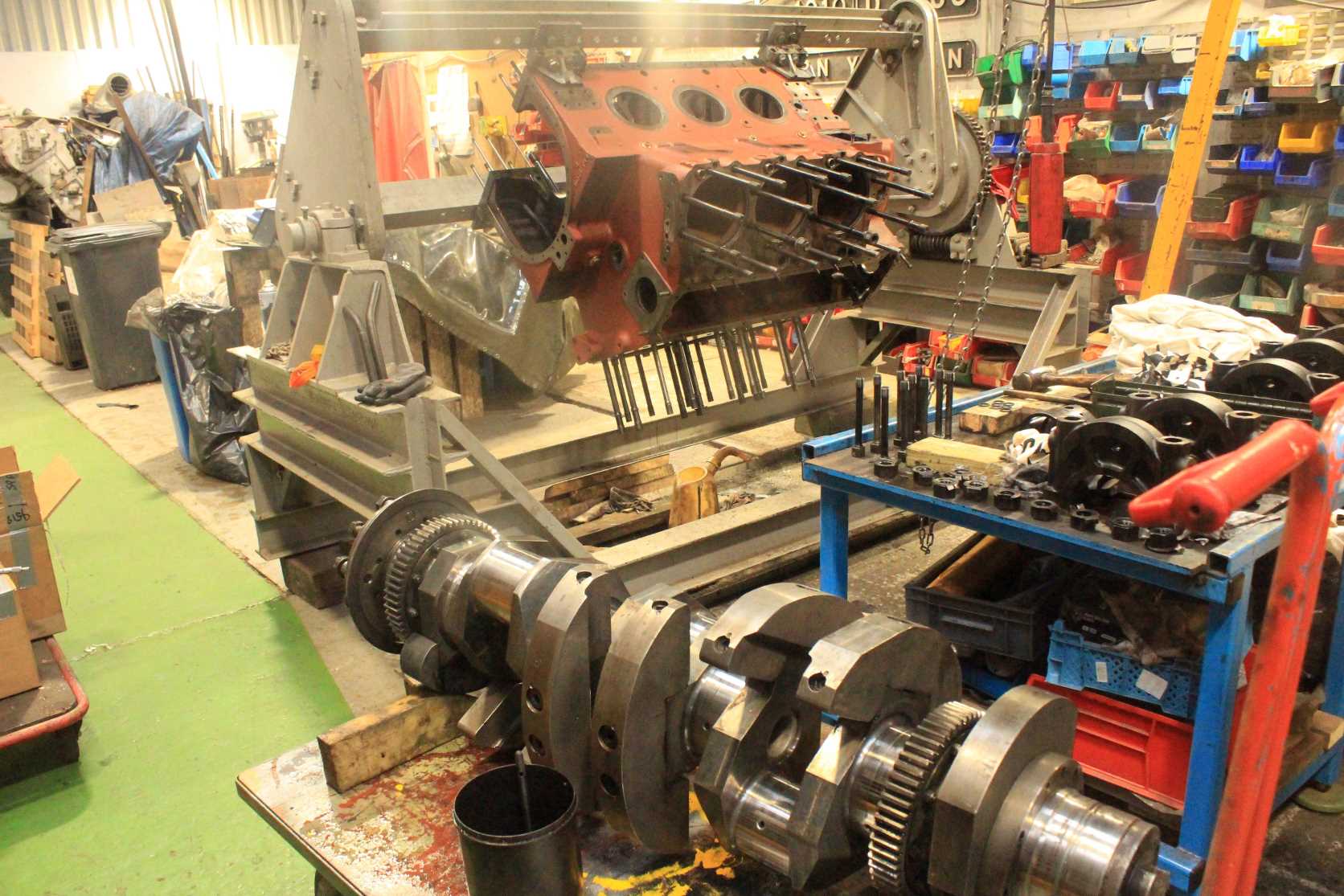
D9518 – the crankshaft in the foreground was pictured before being hoisted into the engine block that is being held in a partially inverted position in the turnover rig behind. Pictured at Williton on Tuesday 11th February 2025 by Terry Deacon © CC BY-NC 3.0
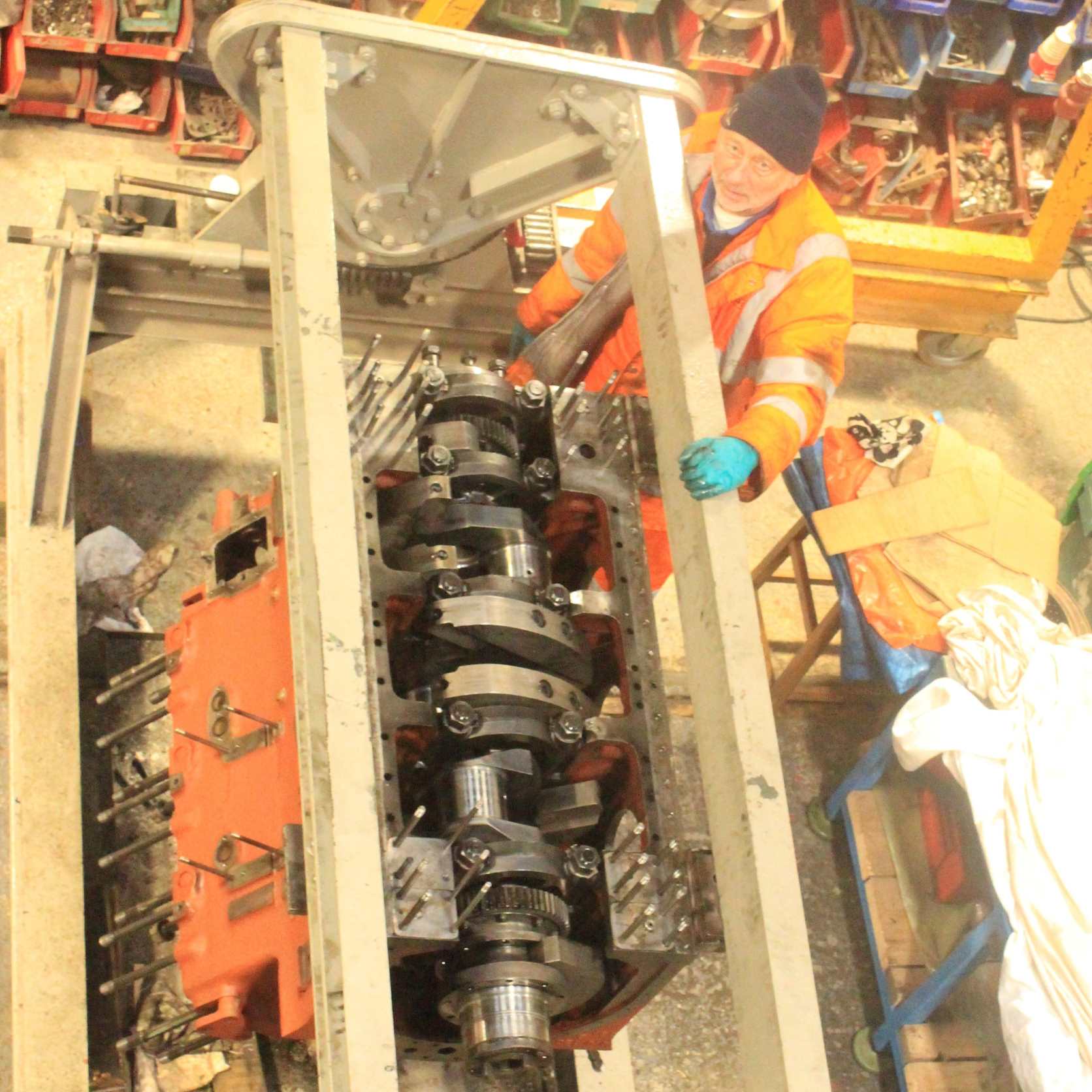
D9518 – the crankshaft is now safely back in the engine block with the main bearing caps refitted and torqued down. The benefit of the turnover rig is apparent in this view at Williton on Tuesday 11th February 2025, with volunteer Nick standing guard. Photo by Terry Deacon © CC BY-NC 3.0
Quality work needs to be funded, so we will continue to appeal for funds to support the work, right up to the point where the loco is completed. Any surplus will then be used to ensure her proper care and upkeep. If you like what we are doing, please make a donation via our website (click on the icon below) or by bank app or by sending a cheque to the DEPG at Williton. THANK YOU VERY MUCH FOR YOUR SUPPORT !
Class 14 ‘Teddy Bear’ D9526 – this loco celebrated her 60th birthday on Monday 6th January, as announced in an earlier post (click here for the post and for a video clip of her most recent engine run). This loco will enter the loco shed some time in the spring and will undergo engine maintenance and receive a paint refresh in time for her appearance at the WSR’s SUMMER DIESEL FESTIVAL 2025.
Class 47 47077 ‘NORTH STAR’ – this loco is based at Grosmont on the North Yorkshire Moors Railway and was in use on Wednesday 12th February 2025 when it worked a rake of Empty Coaching Stock (ECS) from Pickering to Grosmont to put it in place for the half-term running. Upon arrival at Grosmont, our loco passed the unique and wonderfully-restored NER Electric Autocar number 3170. This machine dates back to 1903 and was the first petrol-electric railway vehicle in the world, the forerunner of the modern diesel-eletric ‘unit’ train. Read more about this vehicle by clicking this link.
Many thanks to DEPG member Martin Fisher for rushing over to Grosmont to capture this view at short notice !
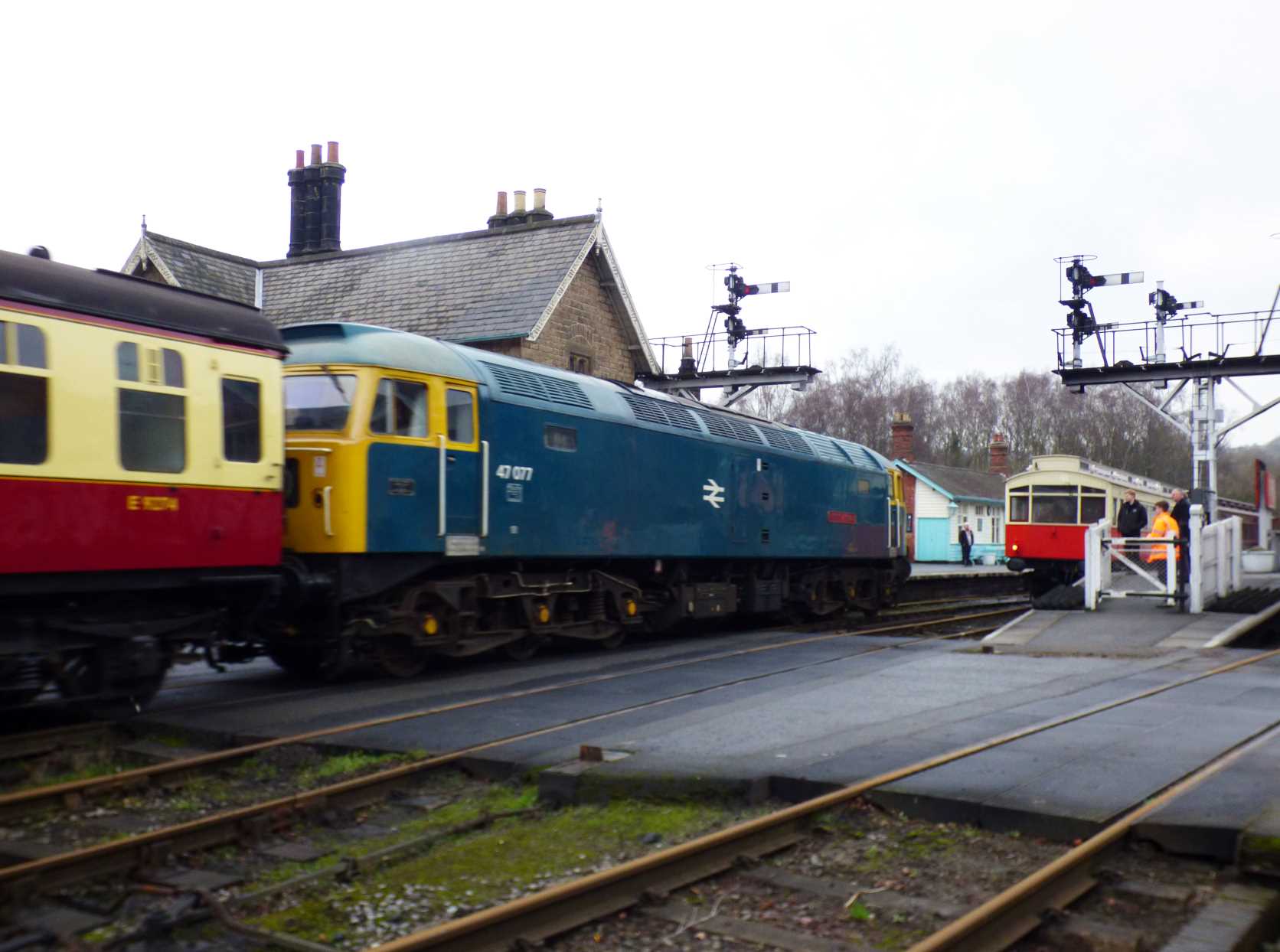
47077 (D1661, 47613, 47840) ‘NORTH STAR’ arrives at Grosmont with a rake of Empty Coaching Stock while restored NER ‘autocar’ 3170 waits to depart on a test run to Pickering. Pictured on Wednesday 12th February 2025 by Martin Fisher © CC BY-NC 3.0
Andrew Barclay 0-4-0DH 578 – as previously stated, this loco is now back in service after having an issue with her starter motor !
If you can help by donating your time to any of these projects, then please JOIN US and come along to the depot for an introduction to what we do and how we do it. We currently have people on site from Saturday through to Tuesday and we can open on other days if we can be sure of getting at least two volunteers on site at all times, so there is plenty of scope. We have tasks of all types to suit most capabilities, both skilled and unskilled.
Many thanks to all of our volunteers who give up so much of their time to work on the cleaning, painting, maintaining, restoring, managing and fund raising for our fleet of heritage locomotives !
BOOK REVIEW: This is a new release from Pen & Sword, another in the series of locomotive studies by ANTHONY P. SAYER and no doubt destined for similar positive reviews, as has been the case for other publications from this author (click here for details). His target this time is the short-lived Class 23 ‘Baby Deltic’, a rare example of a product from the English Electric stable that did not deliver on it’s promises. Anthony digs deep into the background and presents the story in his usual style, complete with fine detail.
Here’s the description text that has been provided by the publisher, Pen & Sword:
“The British Railways ‘Pilot Scheme’ orders of 1955 included ten English Electric Type 2 diesel-electric locomotives deploying Napier ‘Deltic’ engines. These locomotives, more colloquially known as the ‘Baby Deltics’, were introduced into traffic during 1959 for use on the Eastern Region of British Railways. This book looks at the history of the Class 23s, making extensive use of available but previously unpublished archive material, covering their introduction, technical idiosyncrasies, appearance design and performance. Issues with the original ‘Deltic’ engines were ultimately dealt with via a major rehabilitation exercise during the 1963-65 period; whilst various re-engining options were considered , including a new ‘U’ series English Electric high-speed engine design, the original Napier engines were ultimately retained. The work involved in the whole rehabilitation process is discussed in detail using internal English Electric archive material and forms a central focus of research. The fleet survived intact until 1968, when withdrawal commenced as a direct result of declining traffic levels across the UK, with successive National Traction Plans progressively selecting the less successful, non-standard and ‘numerically-challenged’ classes for removal from traffic. All ten locomotives were withdrawn by March 1971. Individual locomotive histories, allocations, fire and accident incidents, liveries and detail differences, storage and disposals are provided for each locomotive.”
Price £32 – NOTE: RRP is £35 so save £3 by buying from the DEPG !
Click here to obtain your copy of this new book.
Other books in this popular series are also available from the DEPG online store (classes 14, 17 and 22)
Four new books have just been added to our online store – click on the images below for details:
ON SHED: many thanks to ROGER GEACH for providing us with this view of our very own Class 52 D1010 ‘WESTERN CAMPAIGNER’ at Plymouth on Sunday 30th September 1973. The loco is carrying the 1V72 headcode of the Leeds to Penzance service, which she will work from Plymouth to Penzance. It was common practice for ‘Westerns’ to shuttle back and forth between Plymouth and Penzance, providing some ‘guaranteed’ and entertaining mileage for followers of the class. Many thanks to Roger for sharing his photo with us all.
Class 52 D1010 ‘WESTERN CAMPAIGNER’ was pictured ‘light engine’ at Plymouth in preparation to work the 1V72 Leeds to Penzance service forward from Plymouth through to Penzance. Pictured on Sunday 30th September 1973 by Roger Geach © CC BY-NC 3.0
DEPG NEWS – the February edition of the quarterly DEPG Newsletter has been produced on schedule by editor Mark Bladwell and has been mailed or emailed (according to member preferences). The paper copies were mailed on Saturday 8th February, but an issue has arisen where an effort to save cost has backfired ….
The labels used were old stock and have lost their ‘stickyness’ and some have become detached in the post, resulting in the newsletters being returned to the sender without address labels. Unfortunately, we don’t know who has received their newsletters and who hasn’t !
So, if you are a member and want a paper copy of the newsletter and haven’t yet received it, please get in touch by using our CONTACT FORM and we will get another copy in the mail for you. Apologies for any delay !
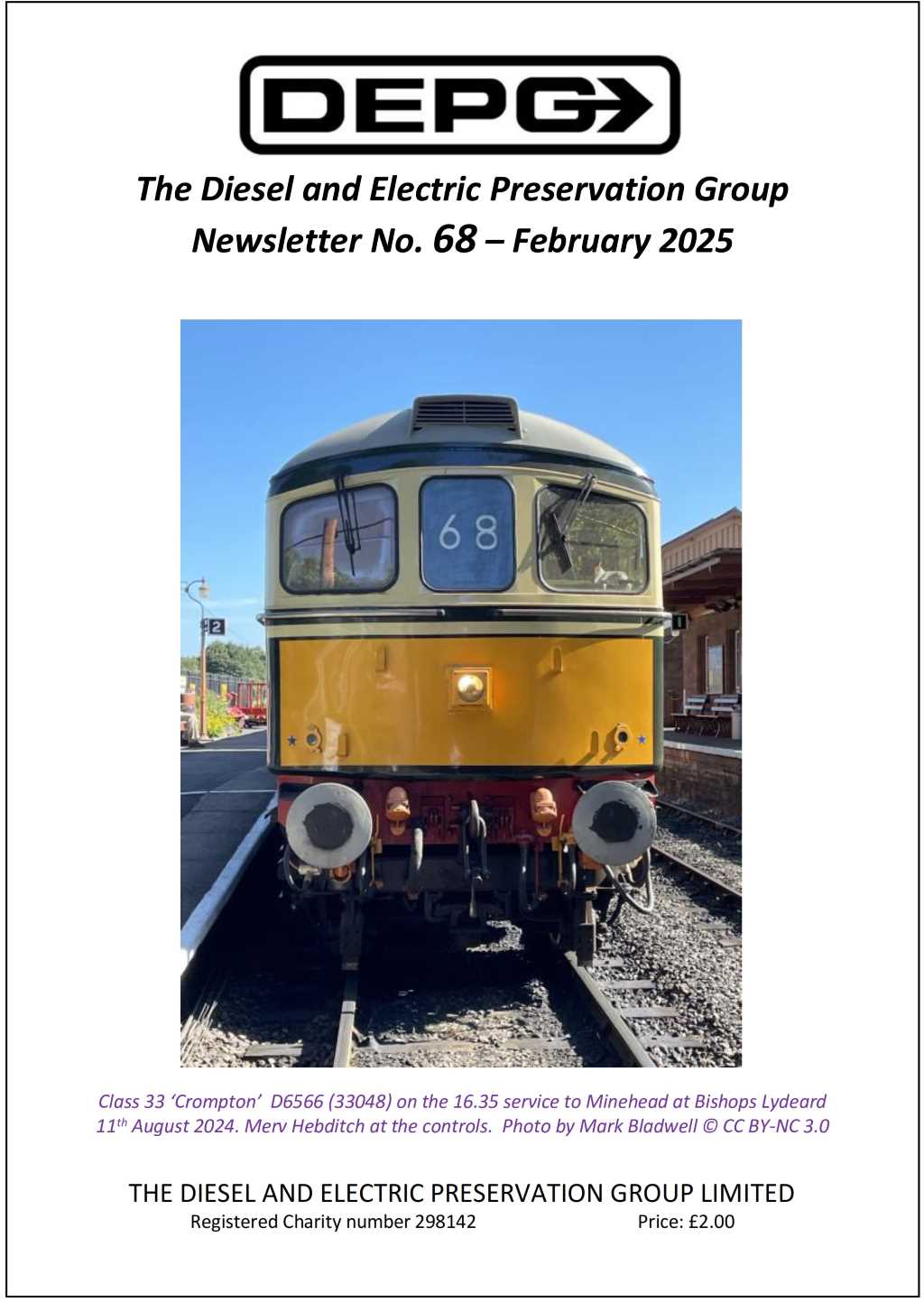
The DEPG is a charity and is run entirely by volunteers, many of whom give both their time and their money to the continuance of work on the locos in the DEPG fleet. If you have been enjoying the roundup for free, have you considered joining us for just £1 a month ? You can then add your name to all of those helping out on the above projects and play your part in the future of our locos for a lot less than the price of a cup of coffee!
JOIN US using whichever membership class is appropriate for your situation and means. CLICK HERE or on the image below or use the QR code to get the details.
If you would like to go one step further and come along to help with the work on the locos in our fleet, then please use our CONTACT FORM to let us know that you would like to volunteer and we will respond with more details.
We look forward to hearing from you !




